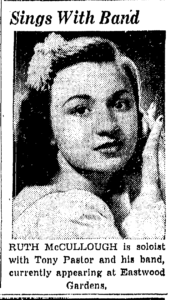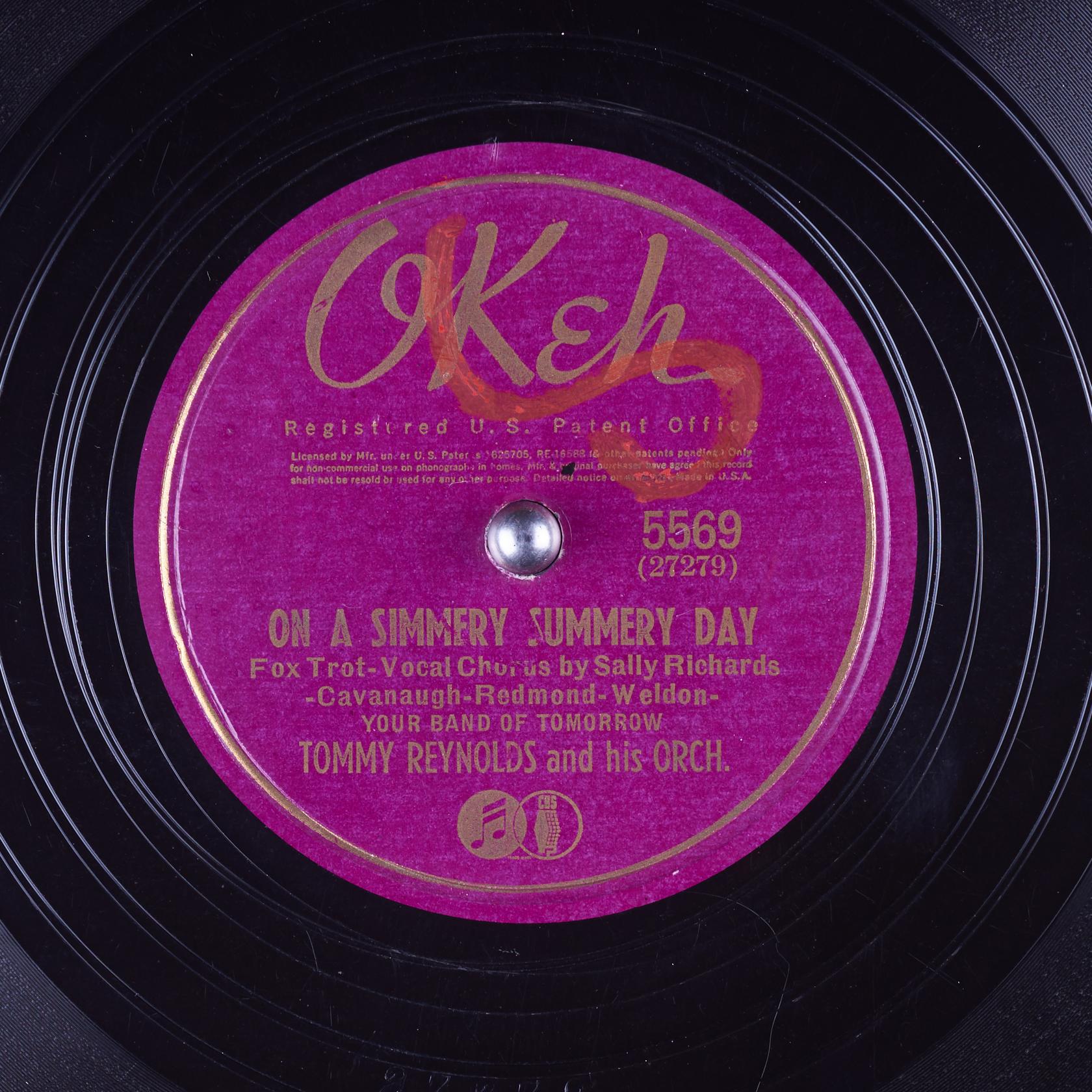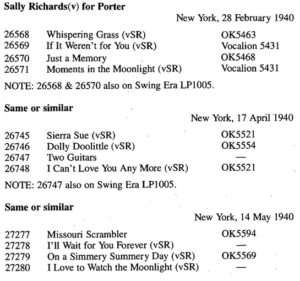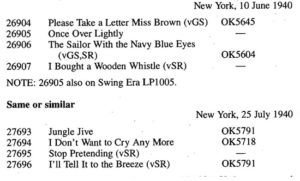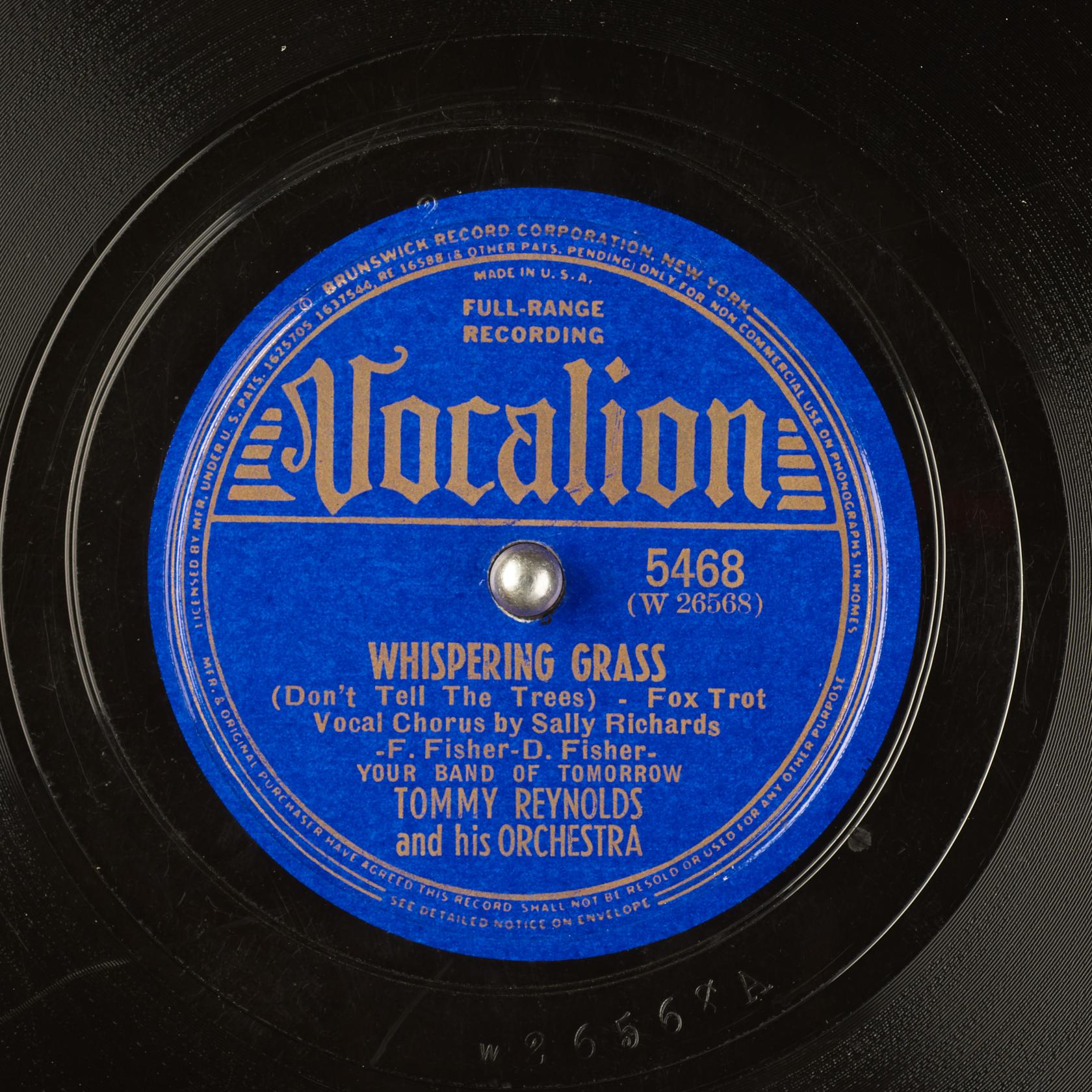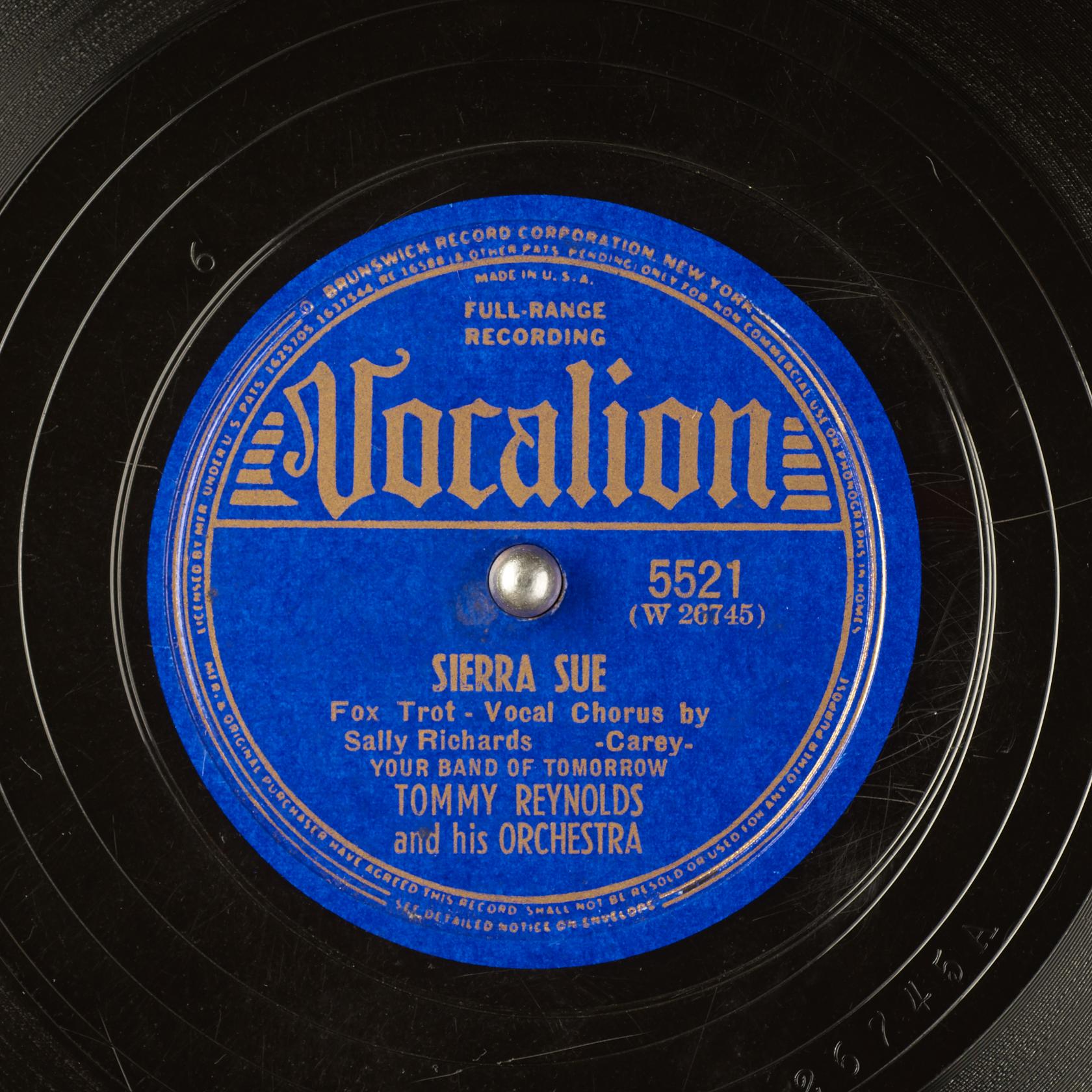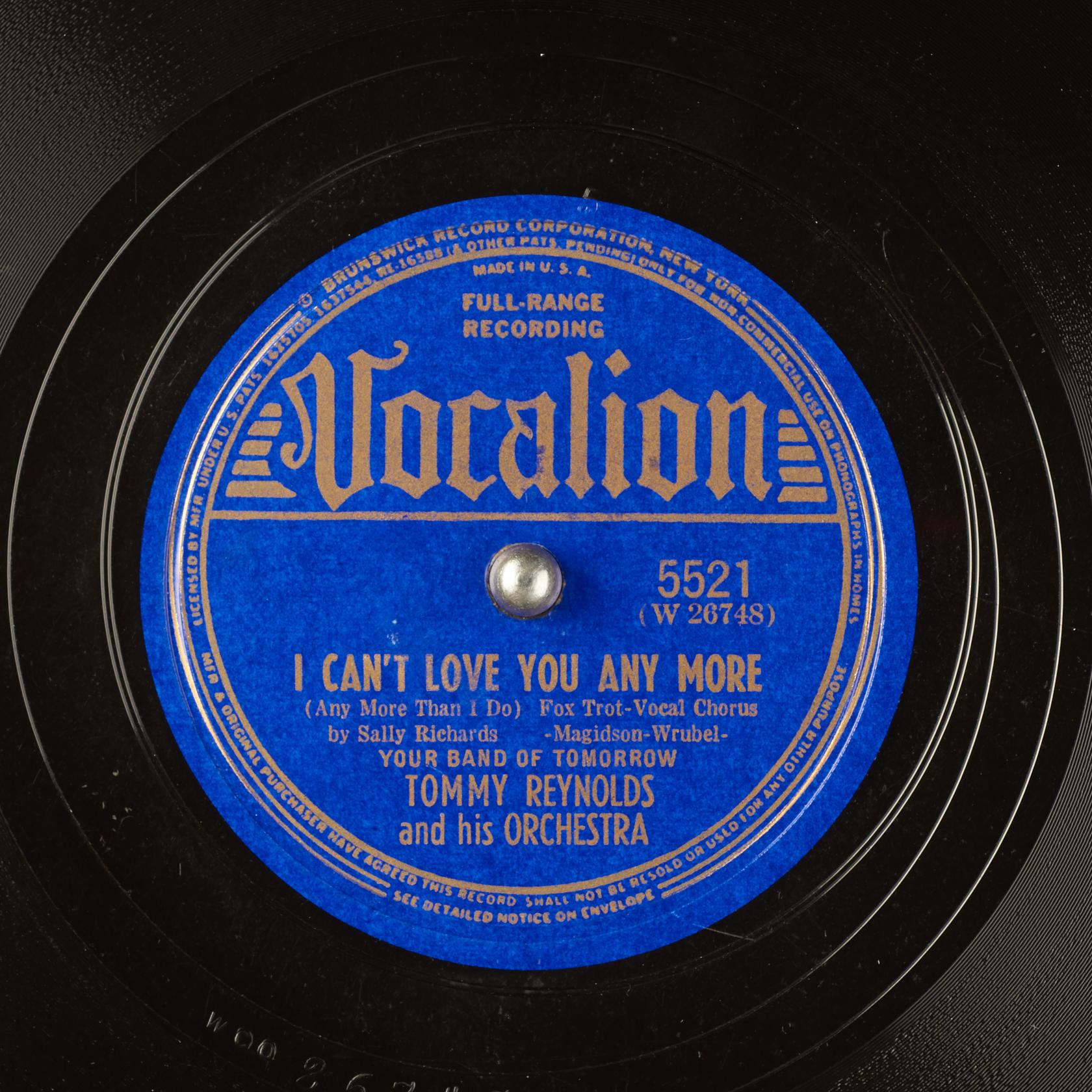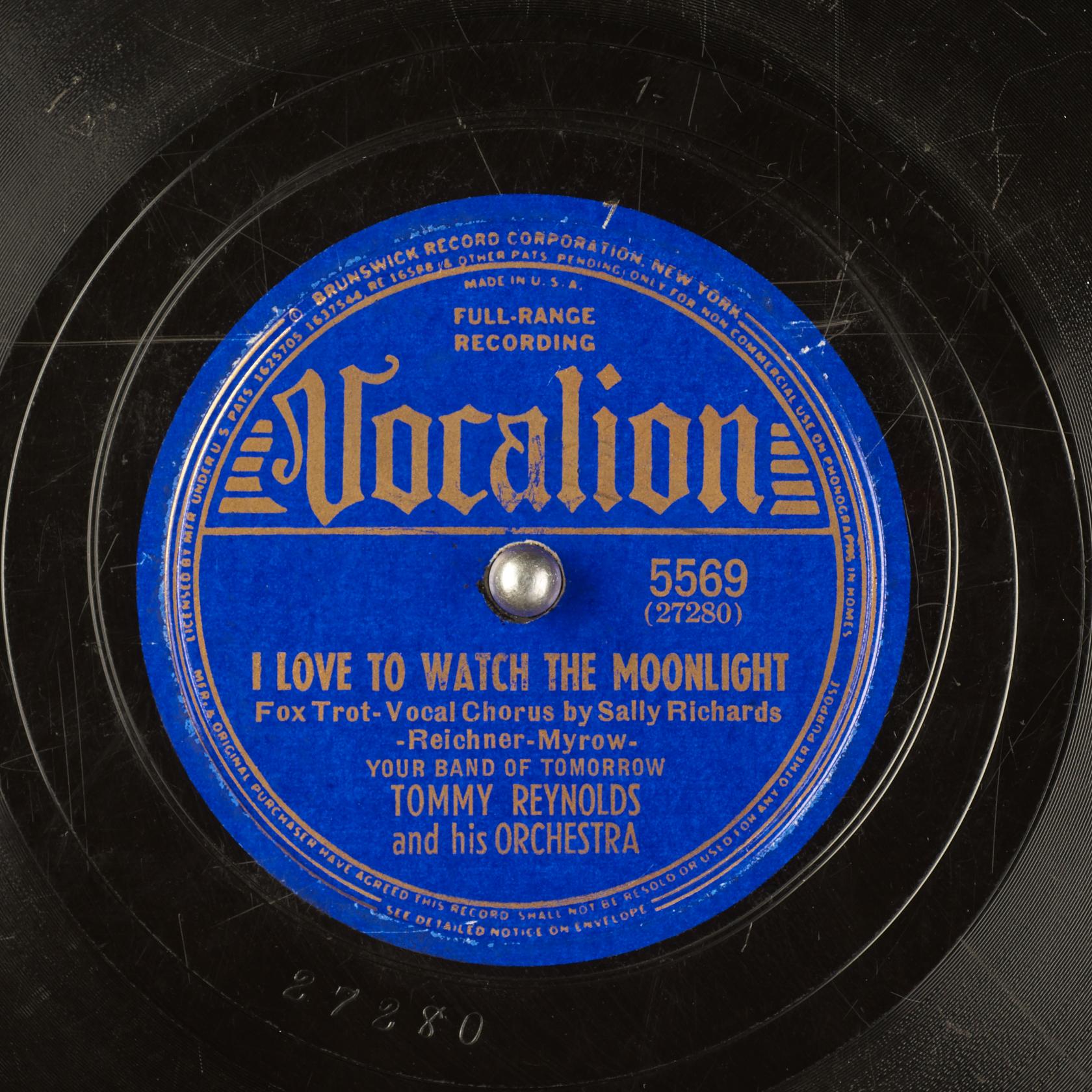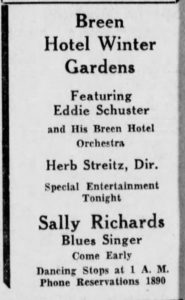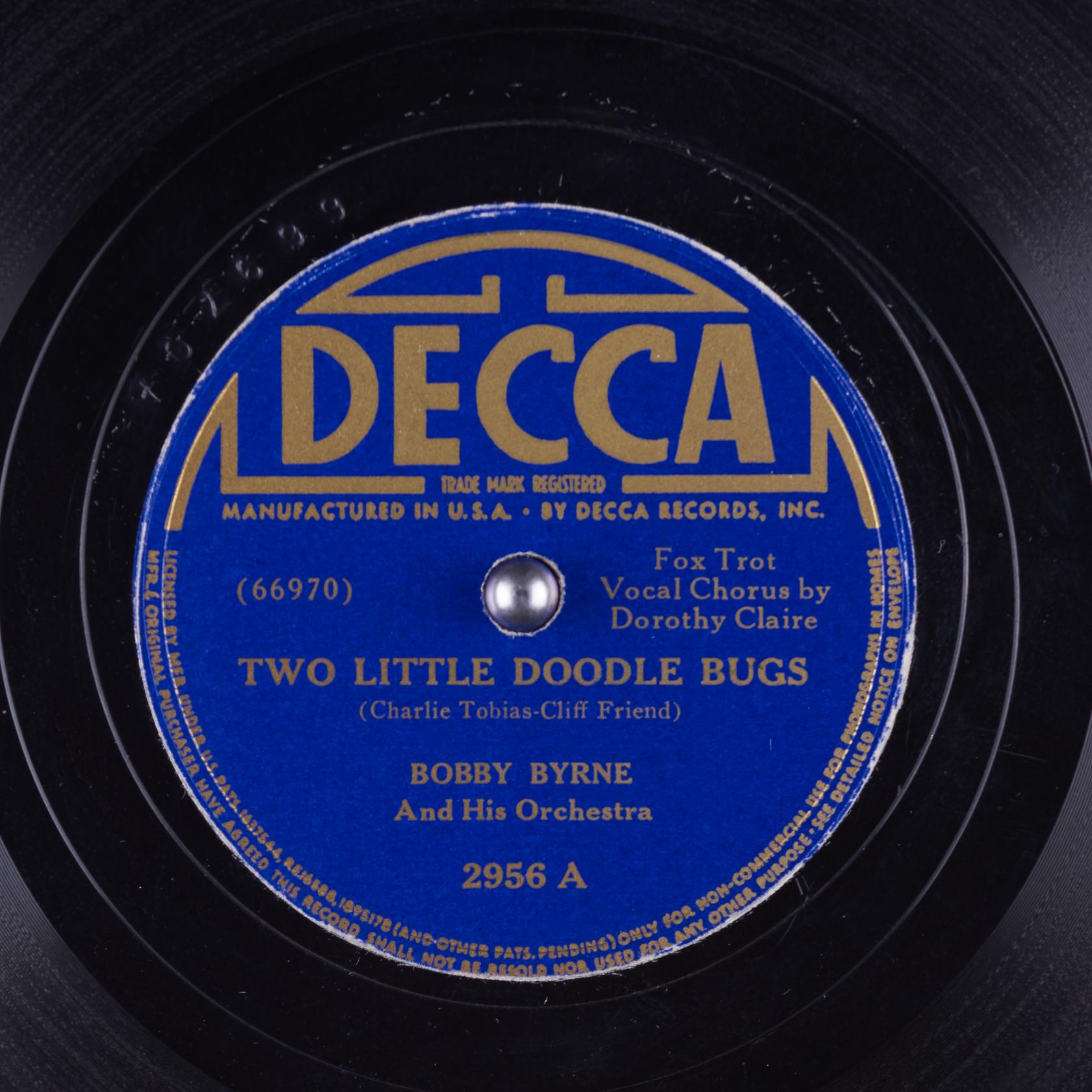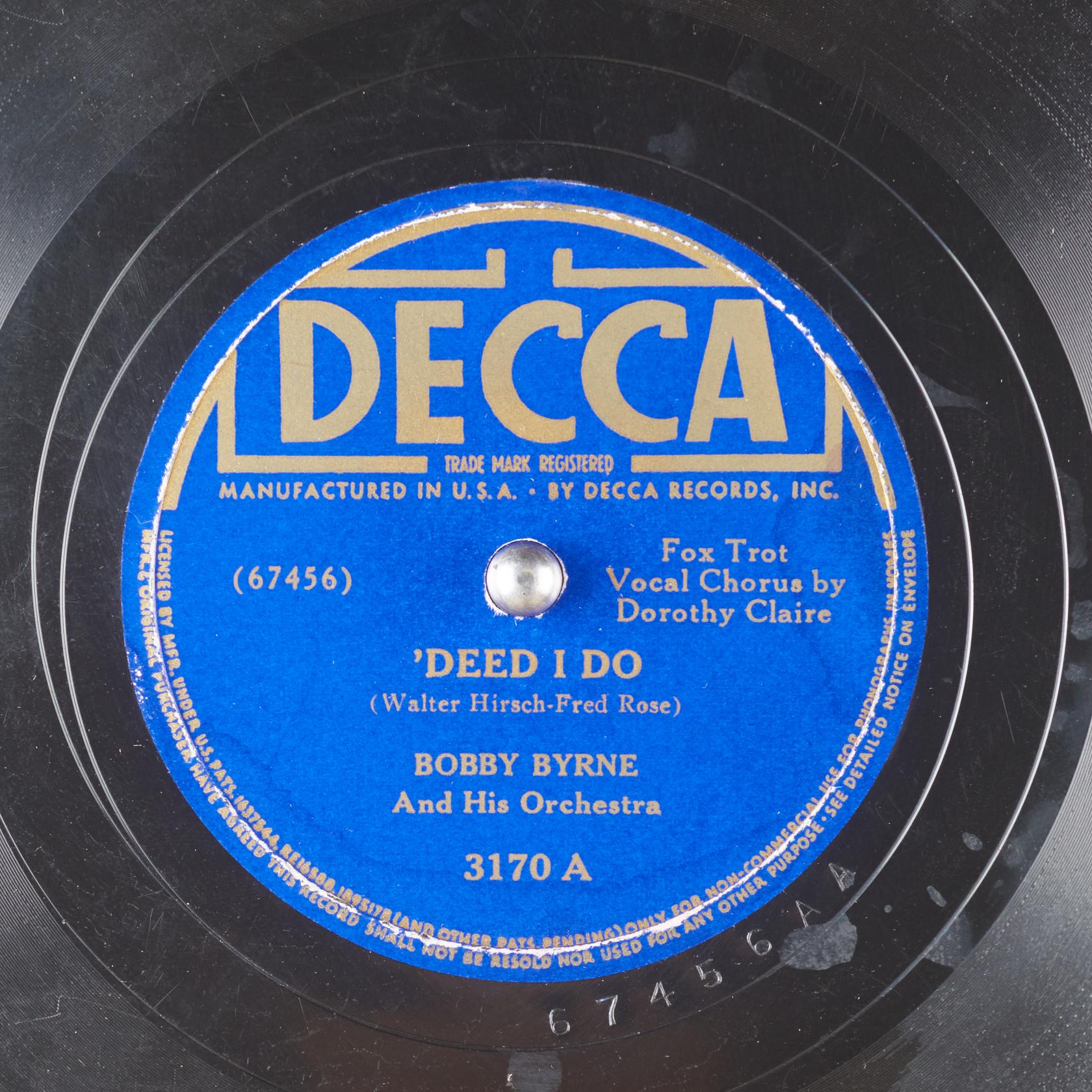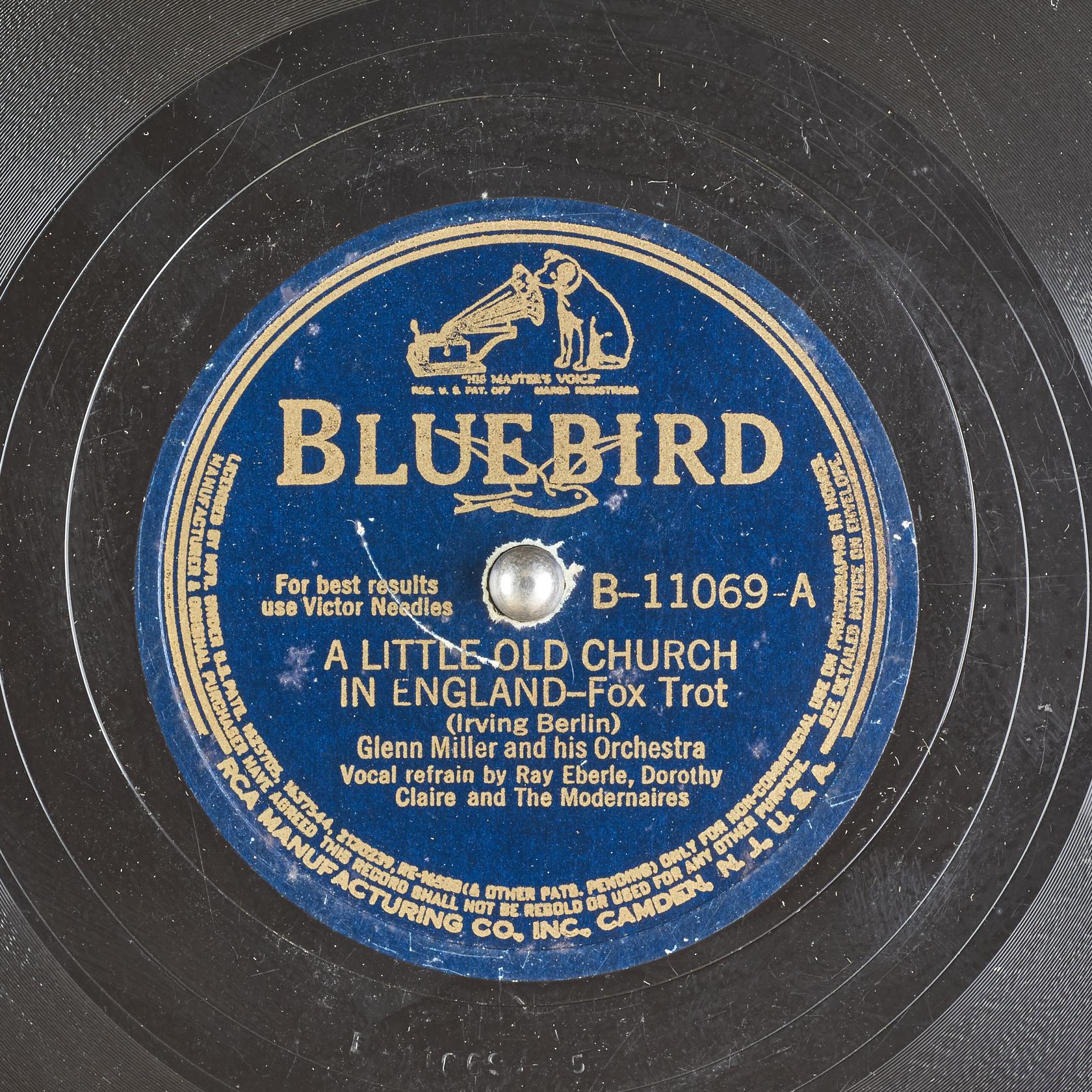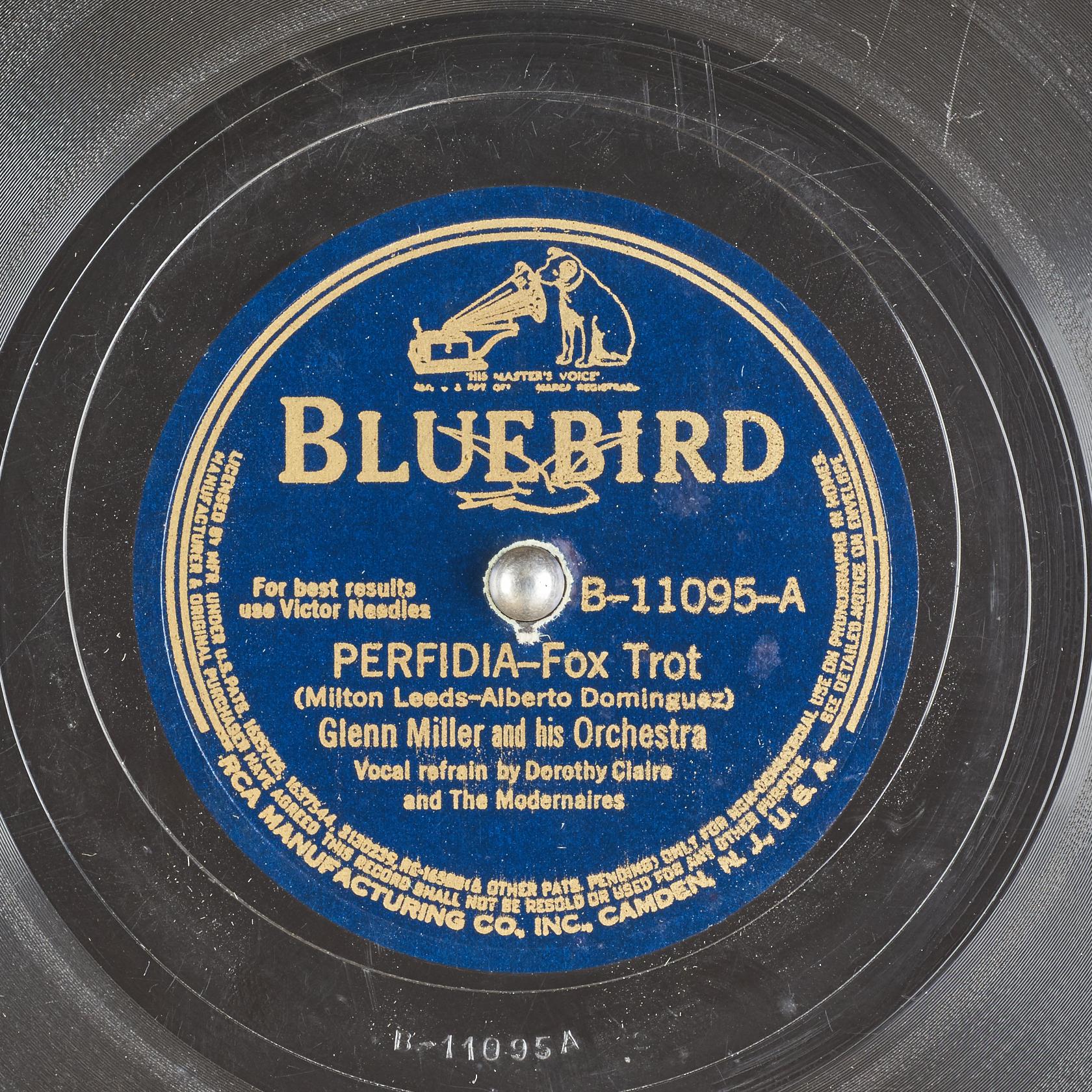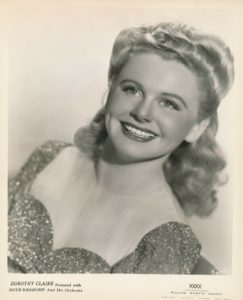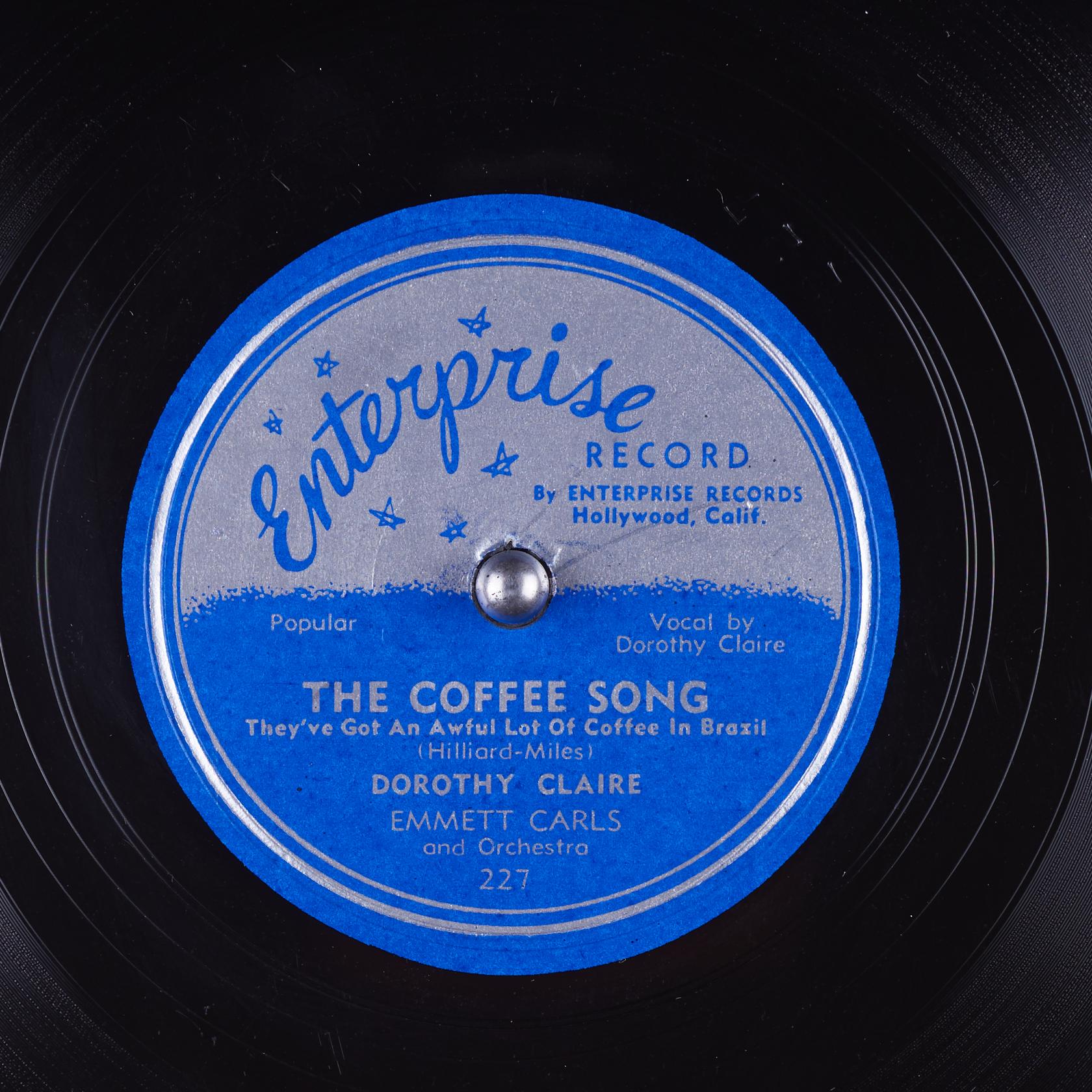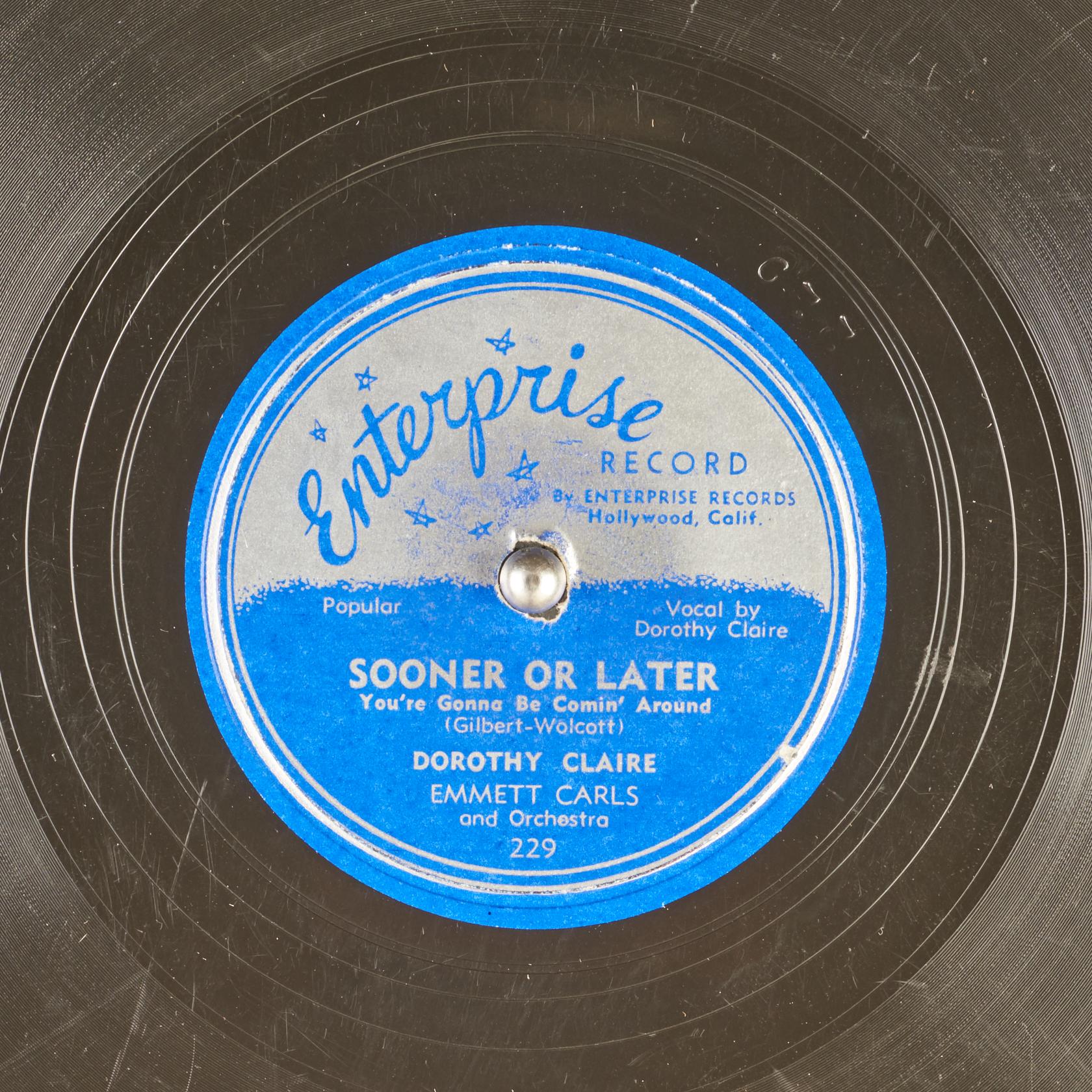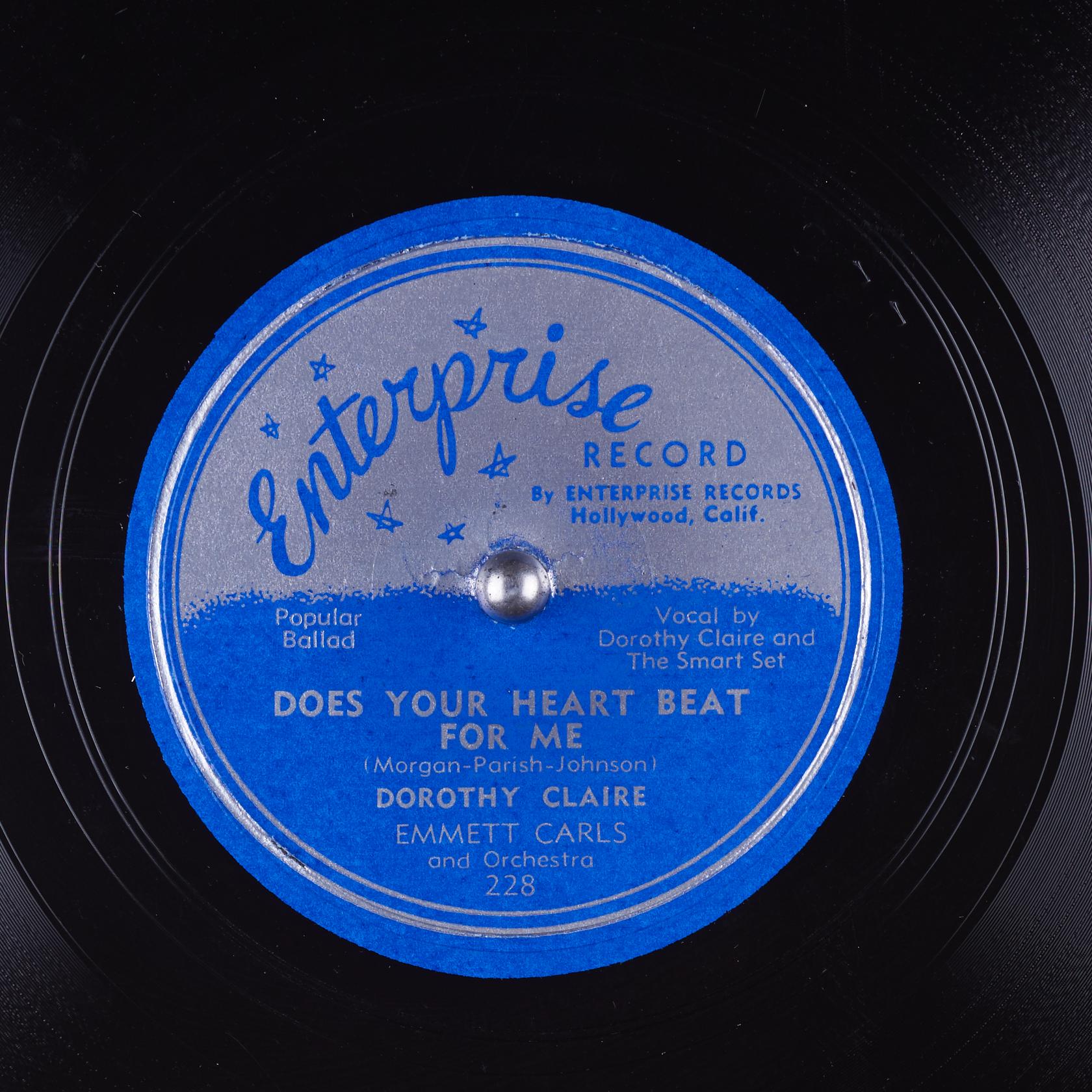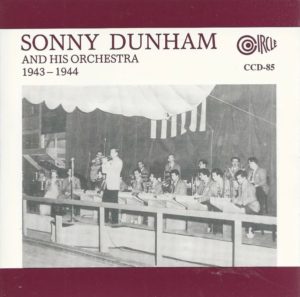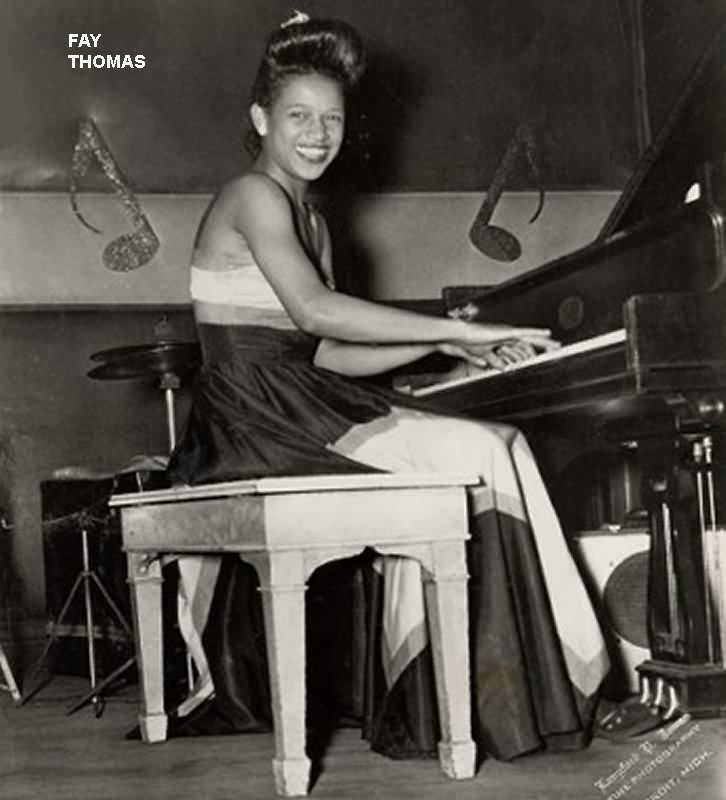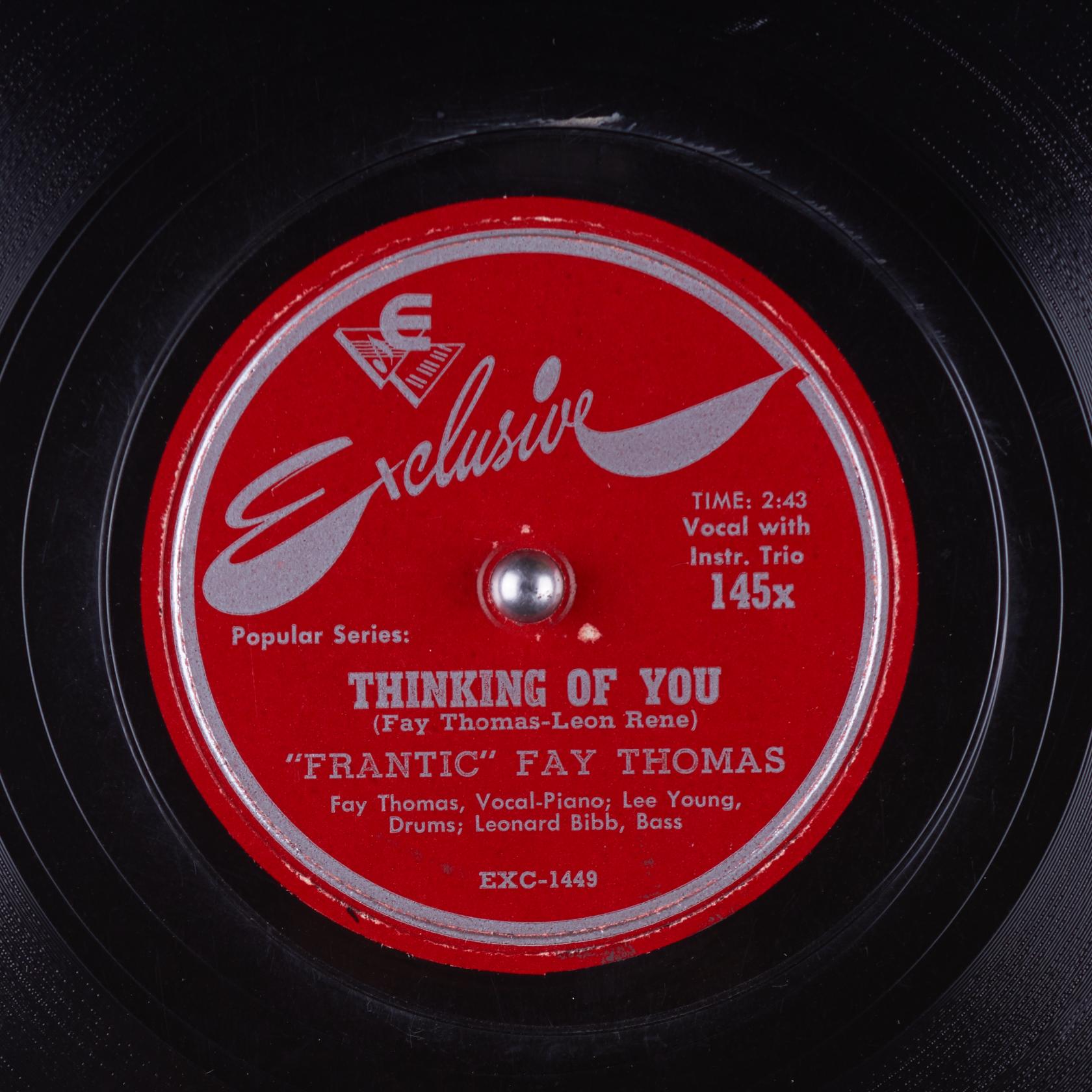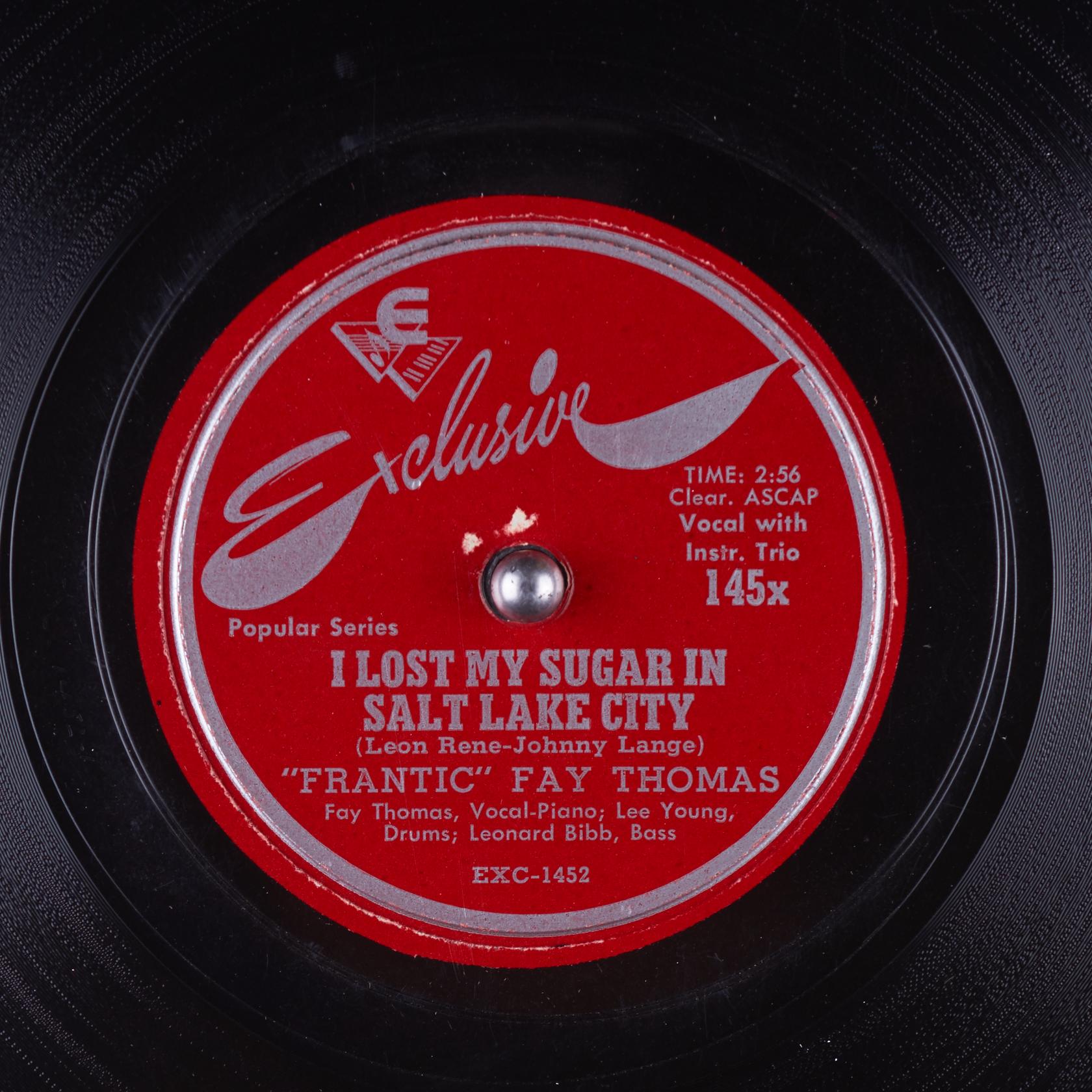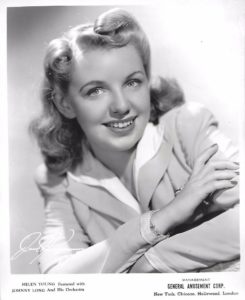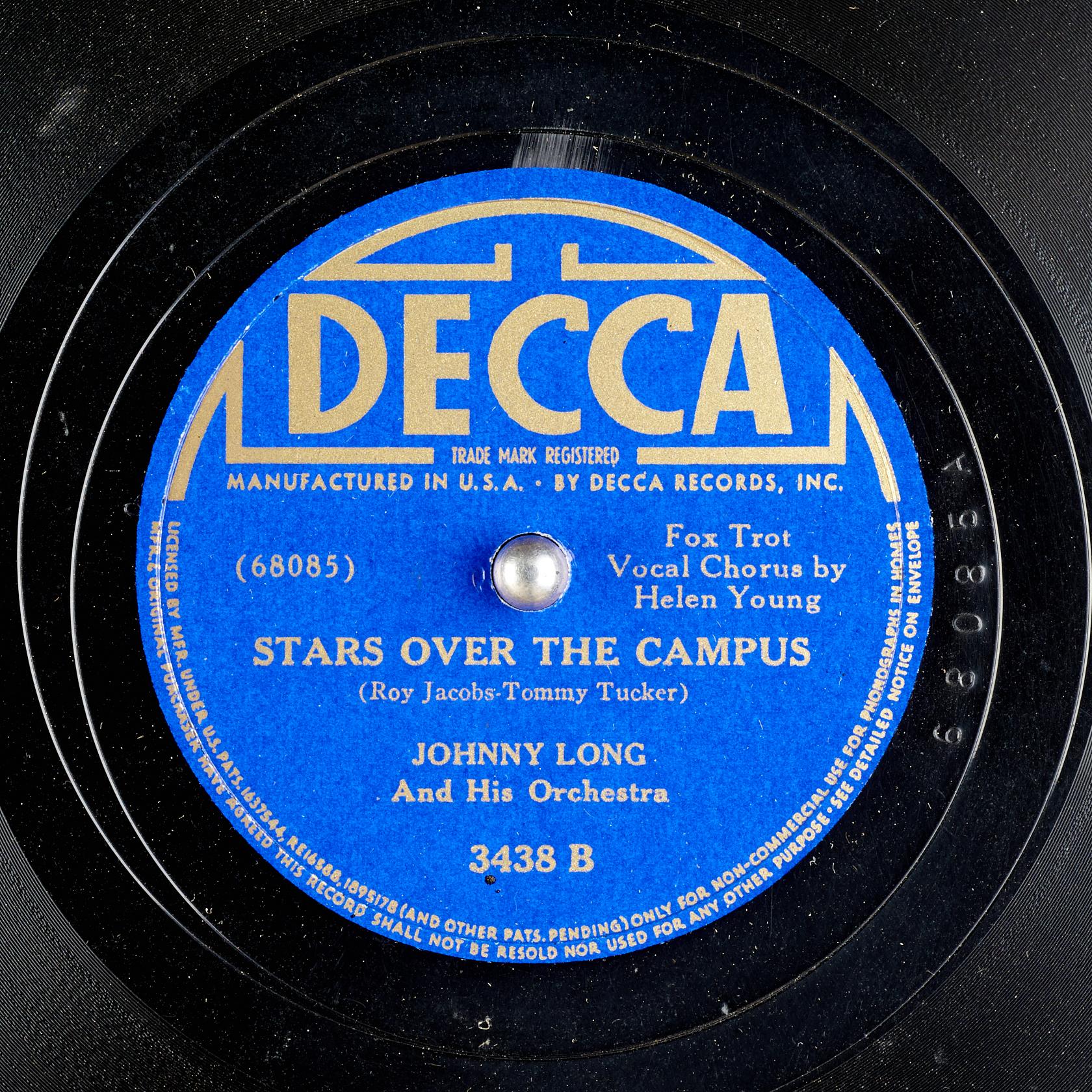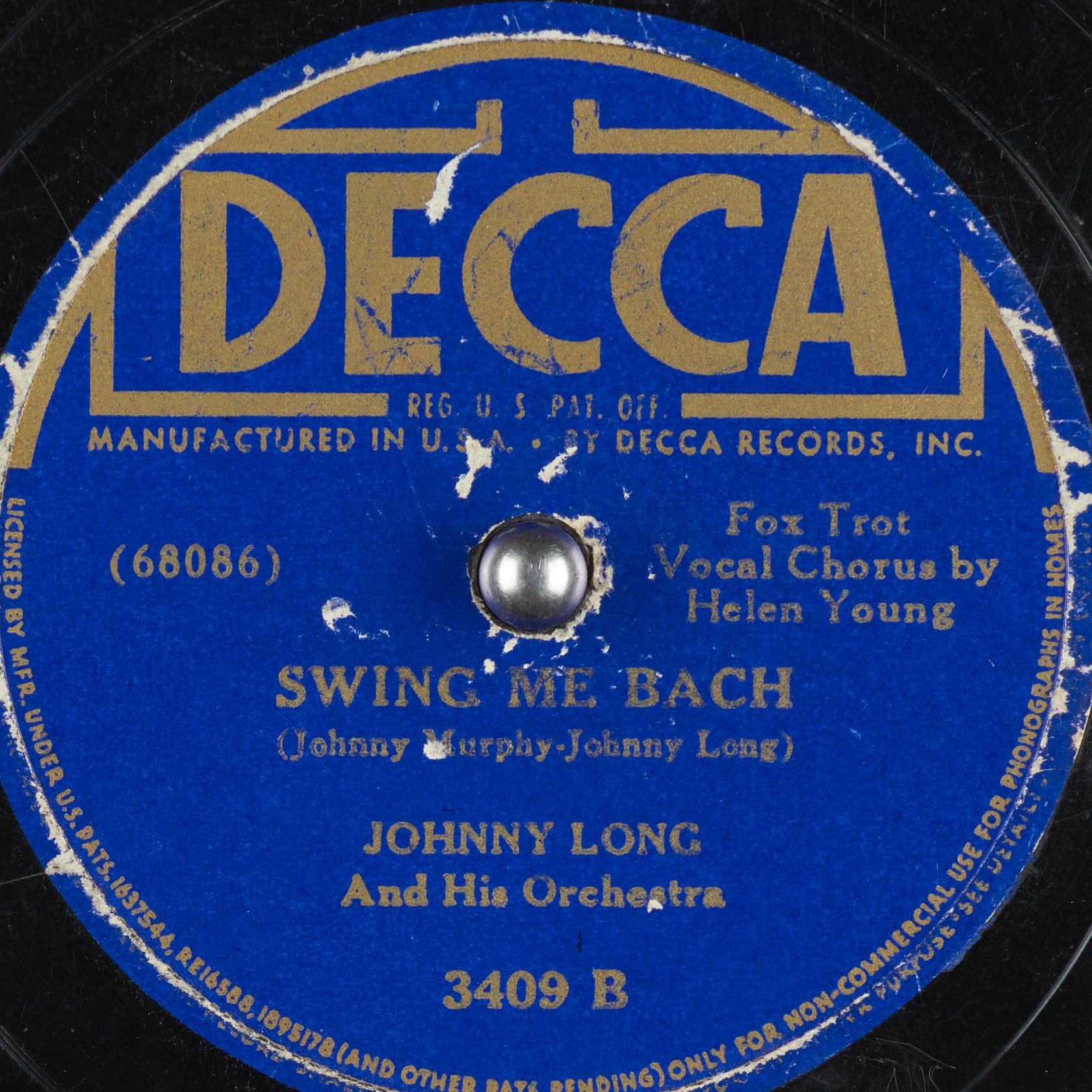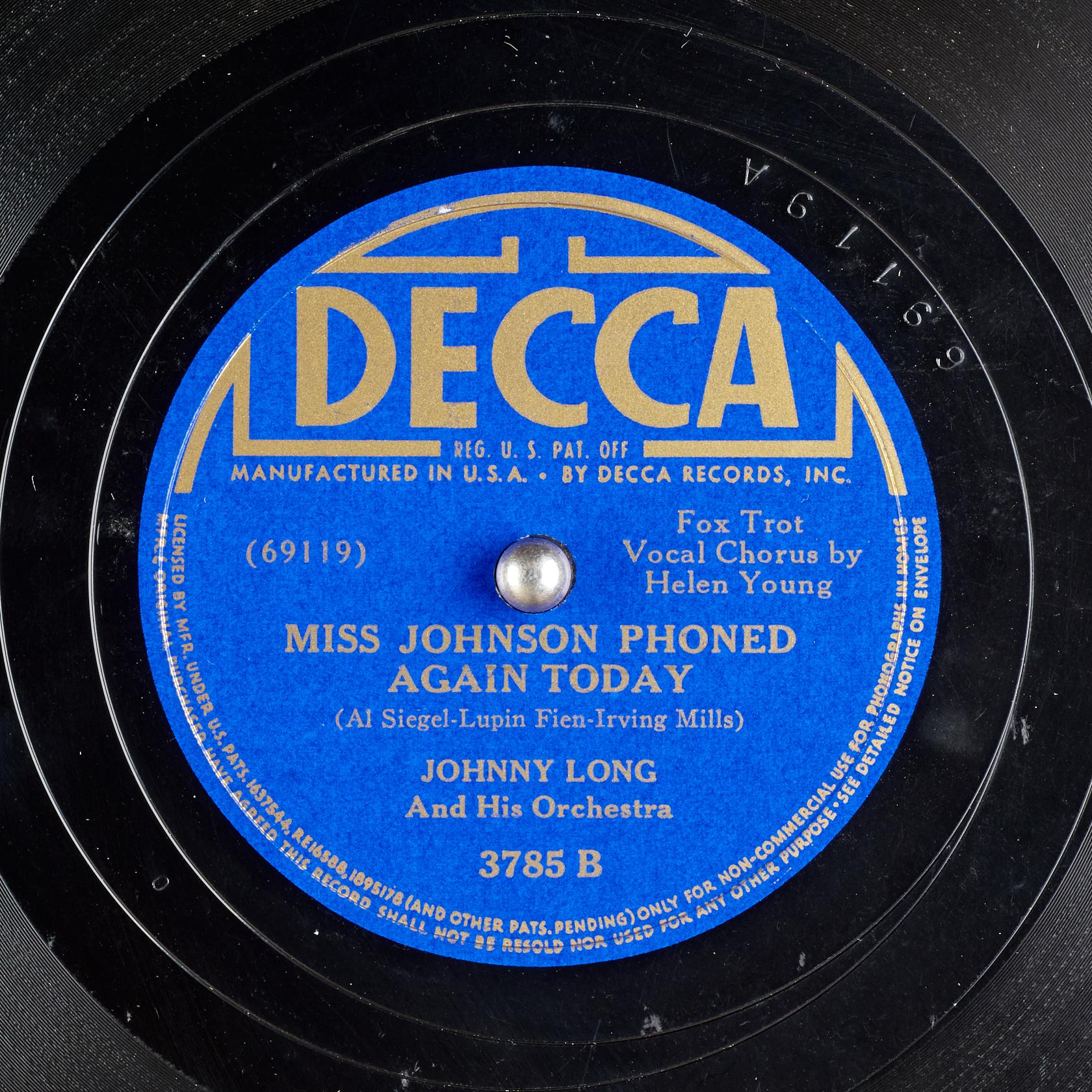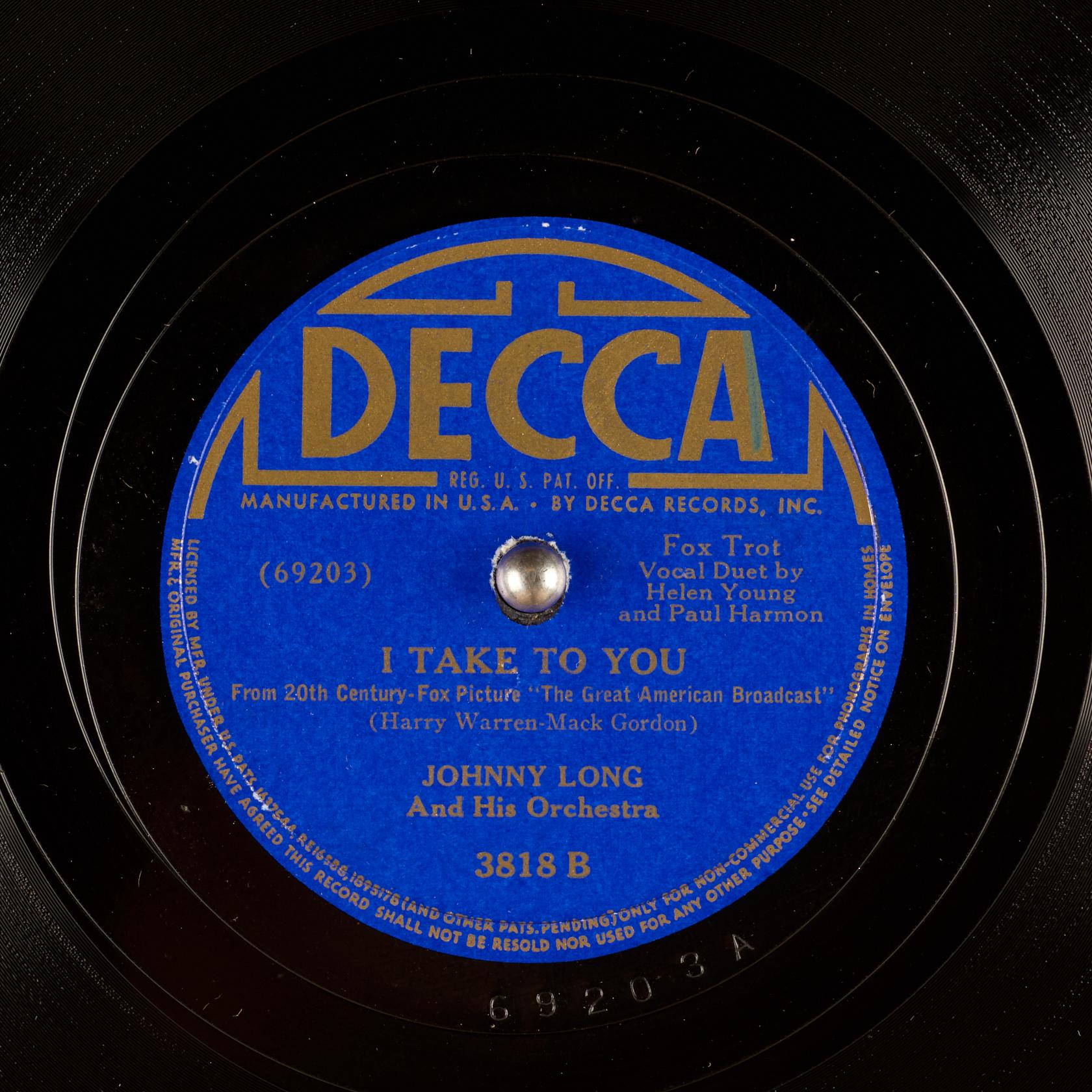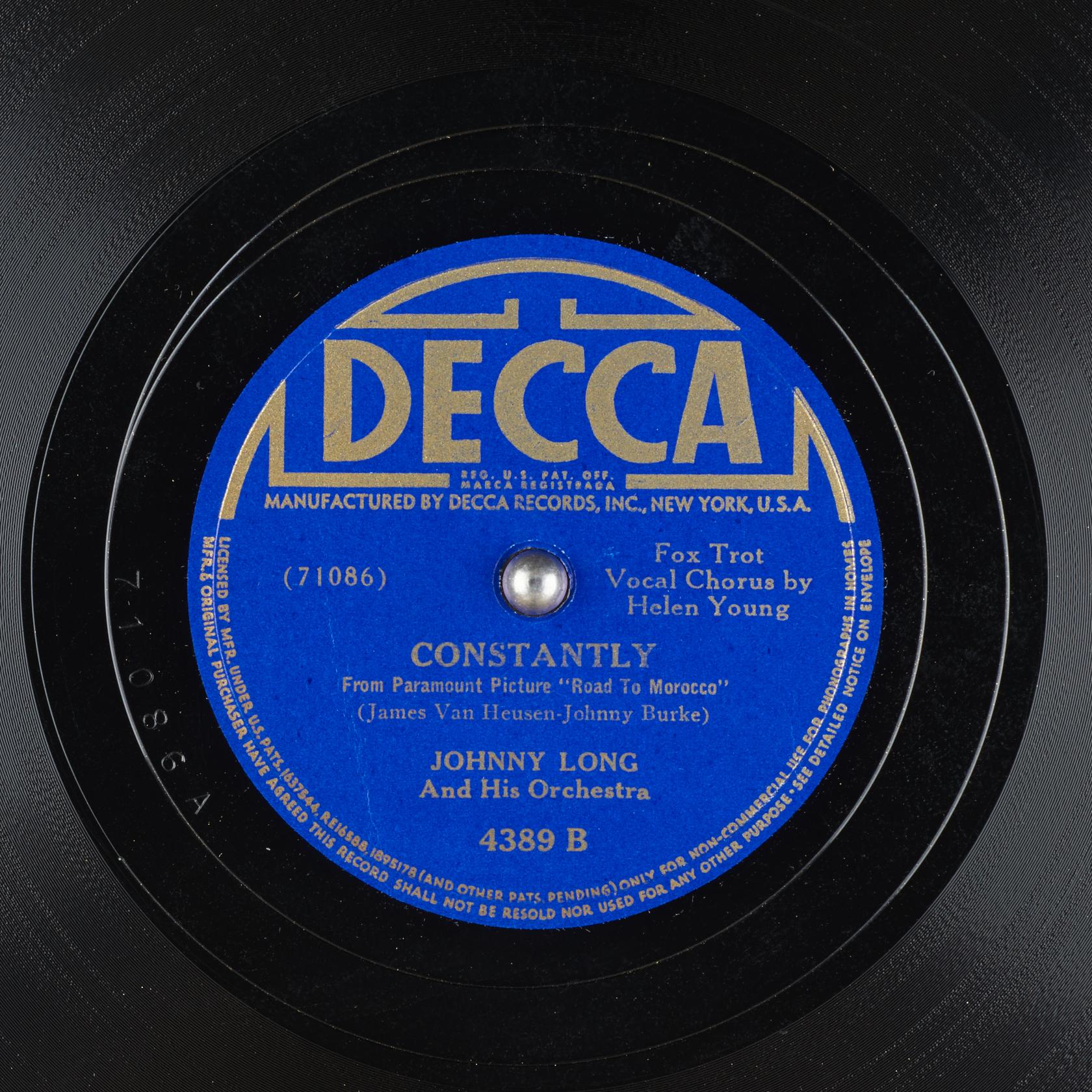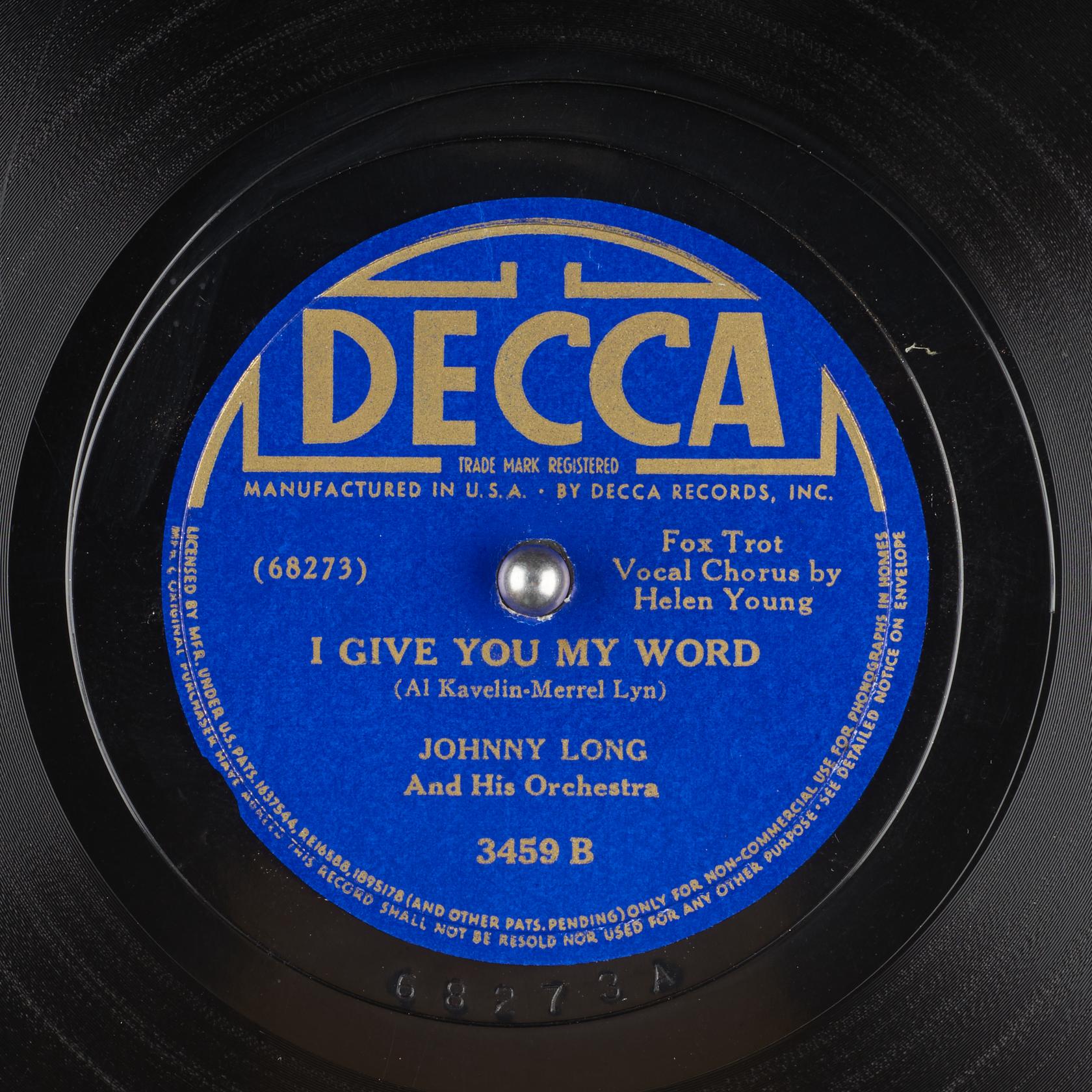 Little did I know that when I published my first False Ducks blahg, THE BLAHG & THE MOST HAPPY SOUND in October of 2011 that I’d not only be writing new blahgs almost twelve years later but also be continuing to reintroduce forgotten music. In that first blahg I posted about an album by Margaret Ann & The Ja-Da Quartet with the title “The Most Happy Sound.” I offered tracks from the album and some 45 rpm singles by the group. In previous other blahgs such as 12 MONTHS -12 RECORDS – 12 SONGS, 12 MONTHS – 12 MORE RECORDS – 12 MORE SONGS, and my most recent blahg, MORE VINYL & THE GHOST OF THE TURNING POINT I offered up songs from records I had purchased at thrift stores or in used record shops. That most recent blahg also quoted me as saying “I’m only going to post about 7 right now but I’ll look through the stack near my stereo and see if I can do a part two for this blahg.” Well this is that part two…sort of.
Little did I know that when I published my first False Ducks blahg, THE BLAHG & THE MOST HAPPY SOUND in October of 2011 that I’d not only be writing new blahgs almost twelve years later but also be continuing to reintroduce forgotten music. In that first blahg I posted about an album by Margaret Ann & The Ja-Da Quartet with the title “The Most Happy Sound.” I offered tracks from the album and some 45 rpm singles by the group. In previous other blahgs such as 12 MONTHS -12 RECORDS – 12 SONGS, 12 MONTHS – 12 MORE RECORDS – 12 MORE SONGS, and my most recent blahg, MORE VINYL & THE GHOST OF THE TURNING POINT I offered up songs from records I had purchased at thrift stores or in used record shops. That most recent blahg also quoted me as saying “I’m only going to post about 7 right now but I’ll look through the stack near my stereo and see if I can do a part two for this blahg.” Well this is that part two…sort of.
I did go through all of the records stacked up around my stereo and I did find some more records that I hadn’t posted about. I found 10 records that have never received a mention in any of my blahgs and I purchased three more records over the weekend. Here’s the rundown with the first ten being previous thrift store purchases and the last three being my most recent acquisitions:
- –Les Brown Jr. – Wildest Drums Yet!
- –Omega Jazz Band
- –Beverly Kenney – Born To Be Blue
- –Pete Daily’s Dixieland Band
- –Frank Traynor’s Jazz Preachers
- –Climax Jazz Band Volume 1 Stereo
- –Lester Lanin and His Orchestra – The Madison Avenue Beat
- –Willis Jackson Quintet – Please Mr. Jackson
- –Drumsticks – Trumpets – And Dixieland
- –Golden Era of Dixieland Jazz
- –Dukes of Dixieland – Come To The Cabaret
- –Tony Pastor Meets Ike Carpenter
- –The Greatest White Trumpeter of All Time Bunny Berigan
I love vinyl records. Some of these old Orchestra and Dixieland Band albums have never seen reissues on CDs or more likely some of the songs appeared in huge volume sets that cost a lot more than the $2.99 a piece I paid for the above records. That price has gone up over the years. Value Village, a big thrift store here in Canada, used to charge $1.99 but $2.99 seems to be their new norm. I can still find some records for $1 at smaller thrift stores but sometimes the records are not in great shape. I try not to purchase anything that skips or if the jacket is split all around. In this blahg, you’re in for some treats. There may be some scratchy sounds or pops and clicks but that’s the allure of vinyl. Enjoy!
First up is Les Brown Jr. with his album, “Wildest Drums Yet!” This is on the Crescendo label.
In researching Les Brown Jr., I discovered that he passed away on January 9th of this year, 2023. Here’s the Variety obituary for him:
Les Brown Jr., a musician whose entertainment career also included acting, writing, directing and producing, died of cancer Jan. 9 at his home in Branson, Mo, his family announced. He was 82.
Brown Jr. was the son of composer and band leader Les Brown Sr., who led Les Brown and His Band of Renown. After the death of his father in 2001, Brown became the full-time leader of his father’s band, continuing to perform throughout the world and in a regular big band show in Branson, Mo.
In his youth, Brown Jr. also worked as an actor on many TV shows and films, including “Gunsmoke,” “Lassie,” “General Hospital,” “F-Troop,” “The Lucy Show,” “Green Acres,” “Gilligan’s Island,” “Wild, Wild Winter” and “The Baileys of Balboa,” the latter in which he had a co-starring role as Jim Bailey.
His extensive music career began with the solo album “Wildest Drums Yet!” and included being the drummer and vocalist for his band the Rockin’ Foo, performing with the likes of Carlos Santana during his touring days. He was also a concert promoter and record producer for jazz and country music artists including Merle Haggard, Shirley Jones, Doris Day, Mickey Gilley, The Lettermen and Loretta Lynn.
He later hosted a national radio show on the “Music of Your Life” network, and most recently a show titled after the Band of Renown on SiriusXM’s 40s Junction.
Brown Jr. was born in New York City in 1940 to Les and Claire Brown. He will be remembered for his love of horseback riding, sports cars and his dog, Romeo.
Brown Jr. is survived by his wife of 21 years, Alexa Brown, daughter Emily Cabral, son Christopher Brown, grandchildren McCoy, Winden and Soleil Brown, stepson Blake Worrell, stepdaughters Kelli and Erin Ellis, sister Denise Marsh-Jordan, nephews Jeff Marsh and Michael Lyons, cousins Teri Brown and Bruce Brown and uncle Clyde Brow.
Now, if you spotted the reference to Gilligan’s Island in the obituary then you’re probably wondering about that. Les Brown Jr. appeared as the drummer Bingo for the musical band “The Mosquitoes.” Remember Bingo, Bango, Bongo, and Irviving? Here’s a clip of that fictional band performing “Don’t Bug Me” & “He’s A Loser” from that Gilligan’s Island episode:
From the album “Wildest Drums Yet!” here is “One Mint Julep”:
And the title track, “Wildest Drums Yet”:
Moving on down the list, we come to the Omega Jazzband. I don’t know much about this band so I’d normally direct anyone to the rear cover of the album to learn more. Here are the front and rear covers:
Yes, you probably have noticed that the rear cover liner notes are in German. Here’s the Google translation:
This LP was created in March 1973. Recording time: 3 days. Tape consumption: 3800m. Consumption of drinks: 5 crates of beer. 3 bottles of whiskey. 2 bottles of vodka. 10 liters apple schnapps. Contributors to the Recordings: Omega Jazz Band. Sound engineer: Peter Wagner. Production: James Fruchtnicht. Peter Wagner. Omega jazz band.
John Hendrik from Rias Berlin had written a query looking for the most popular Berlin jazz band. Result: No. 1: Omega jazz band. This result will not surprise connoisseurs and fans, because the happy jazz, which the group has been playing for 12 years, inspires every listener anew.
The band has been playing together for 6 years with Michael (Mike) Littbarski trumpet, Wolfgang Banaskiwitz clarinet, sax, vocals, Cordes Hauer trombone, vocals, Karsten Krempien banjo, vocals, Manfred (Duddi) Duttkowski bass and Hagen Kauffman drums, percussion .
Many titles are from the so-called 20s and 30s. The arrangements are clear and concise, but very modern and cheerfully packaged. “Being there” is everything for the group as well as for the listener. Fixed venues in Berlin are the Eiershell, the Leierkasten, the Quasimodo, the Latin Quarter and Shop Pop. Apart from guest appearances in Sweden and France, the band plays in almost all German cities.
Band leader is Hagen Kauffmann. He collects and smokes pipes, is usually always in a good mood, knows all the bars in Berlin and drums with a beard.
Mike Littbarski is the musical leader of the group. He plays about 500 pieces, loves vodka, coca, pizza, women, needs little sleep and adores Louis Armstrong.
Wolfgang Banaskiwitz, on the other hand, needs a lot of sleep. He likes to eat well, loves France in addition to his music and plays with a beard.
The only pedestrian is Cordes Hauer. He collects wire-rimmed glasses and antique dolls, adores Eddie Condon jazz and sings with a beard.
Karsten Krempien is a wild car driver. Besides dents, he also collects banjos. He likes to eat, but drinks even more and makes sure the group is in good spirits. He also sings with a beard.
Manfred Duttkowski is the bass man -a hobbyist of stature. He always has his tool box with him.
When listening to this record, something of the good mood and the cheerful music will surely stick in the listener.
So, what have we learned? This is a German band and a number of the musicians have beards. Oh, and they had been playing for 12 years. There is a CD that compiles tracks from four of their albums with the title “30 Years of Music.” Unfortunately I don’t know if the 30 years is from 1973 or when they first started playing together 12 years before that.
I did find an image for a music festival poster in 1970 that mentions the Omega Jazzband:
So what about their music? I found it reminiscent of an album I discussed in a previous blahg, ZOEY, FRANK, JUNE & ALL THAT JAZZ. The album was “Radio” by Borgy’s Banjo Reunion. That album actually came out in 1974 so maybe it was inspired by the Omega Jazzband. It’s pleasant enough but I find it a little heavy on the banjo and kazoo in spots. Here are a couple of samples. First up is “Everybody Loves Saturday Night” with a vocal.
I’m also going to offer up “Ice Cream” which I find myself singing lately but not the version by Omega Jazzband. That song will be included later in this blahg but performed by a different band.
Beverly Kenney was not someone with whom I was familiar. The album cover for “Born To Be Blue” struck me as seductive and sultry and I’m a sucker for vocals by singers that were previously unknown to me.
In researching Beverly Kenney, I discovered that her life was short and sad. Here are some excerpts from her Wikipedia entry:
Beverly Kenney (January 29, 1932, Harrison, New Jersey – April 13, 1960, Greenwich Village, New York City) was an American jazz singer.
Kenney’s career began as a birthday singer for Western Union. After moving to New York City, she recorded a demo tape in 1954 with Tony Tamburello (the demo was released in its entirety in 2006 under the title Snuggled on Your Shoulder).
By the end of the year, she moved to Miami and worked regularly at the Black Magic Room. For several months she toured with Jimmy and Tommy Dorsey’s Dorsey Brothers Orchestra before returning to New York. Kenney said “Tommy and Jimmy liked me, but they thought I was too much of a stylist for the band. After a few months on the road, I left, and returned to New York,” where she sang in clubs with George Shearing, Don Elliott, and Kai Winding.
Between 1956 and 1960, Kenney recorded three albums for Royal Roost and three for Decca. Her first release, Beverly Kenney Sings for Johnny Smith (1956), was recorded when she was 24 and backed by a quartet led by jazz guitarist Johnny Smith. She then began a residency at Birdland accompanied by the Lester Young Quintet. Her TV exposure consisted of one appearance on The Steve Allen Show on May 18, 1958, performing a song she wrote, “I Hate Rock ‘n’ Roll” and one appearance on Playboy’s Penthouse, where Kenney coaxed host Hugh Hefner into joining her to sing “Makin’ Whoopee”.
Kenney attempted suicide twice and succeeded the third time ingesting a combination of alcohol and Seconal on April 12, 1960, in a one room apartment in the University Residence Hotel located at 45 East 11th Street in Greenwich Village, Manhattan, New York.
Very tragic indeed. A beautiful voice who obviously struggled with mental health and possibly addictions. Here’s a video of her during happier times on “Playboy’s Penthouse” and yes you do get to view the duet she did with Hugh Hefner.
Fresh Sound Records have issued many of her albums on CDs with bonus tracks. You can check out her artist page at https://www.freshsoundrecords.com/search?controller=search&orderby=position&orderway=desc&search_query=beverly+kenney&submit_search=
I think I’ll let her music now speak for itself. Most of the tracks on “Born To Be Blue” are very lush and Beverly’s voice evokes a sadness that was probably representative of her life. Give a listen to the title track “Born To Be Blue”:
I like the whole album but there are moments of tenderness that are not as depressing and Beverly herself mentions on the liner notes she really wanted to do “Beyond The Next Hill” which is a more hopeful tune.
Okay, let’s move on with something more upbeat. It’s back to Dixieland with Pete Daily’s Dixieland Band
I noticed from the liner notes on the back cover that the musicians varied on some of the tracks. This album was released in 1950 and might have been a compilation but no other details are available. Let’s get back to swinging with the old chestnut, “When The Saints Go Marching In”:
I’ll slow it down ever so slightly with a song titled “I Want To Linger.” And yes wouldn’t we all like to linger longer with this band on a sunny day?
Keeping with the Jazz but travelling back around the world, we’re going to draw on Australia and hear from Frank Traynor’s Jazz Preachers with their self-titled 1967 album.
Here’s a little bit of information about Frank Traynor from his Wikipedia entry:
Frank Traynor (8 August 1927 – 22 February 1985) was an Australian jazz musician, trombonist and entrepreneur based in Melbourne. He led Australia’s longest continuously running jazz band, the Jazz Preachers, from 1956 until his death in 1985. He founded the Melbourne Jazz Club in 1958. He founded and ran Frank Traynor’s Folk and Jazz Club (1963–75), which played a central role in the Australian folk revival.
The album I’m presenting was only issued in Australia and Canada in 1967. Lucky then, I’m in Canada and found this copy. Here are a couple other finds regarding Frank Traynor. YouTube has a couple of videos of Judith Durham singing with Frank Traynor’s Jazz Preachers. The first is “Trombone Frankie” from 1963:
Next up is Judith Durham and Traynor’s Preachers performing “Jelly Bean Blues”:
Judith Durham passed away in August of 2022 at the age of 79 but from the 1967 album “Frank Traynor’s Jazz Preachers” I’m going to start off with a song that I posted earlier in this blahg by the Omega Jazzband. The song is Ice Cream but this time it’s all Frank Traynor’s Jazz Preachers:
I guess you can see that a lot of the records in this blahg fall into the Jazz or Dixieland Jazz category. I’m crazy about Jazz that way so why not post a song that reflects that? So here’s “The World’s Jazz Crazy, Lord” with a vocal by Helen Violaris:
I’m going to fly back home again to Canada and post the next album from a strictly Canadian jazz band. This time it’s The Climax Jazz Band:
I hope you noticed that the front cover has signatures from some of the band members. There’s Bob Erwig, Bruce Bakewell, Juergen Hesse, Jack Vincken, and Chris Daniels. There are other signatures by Joseph “Corn Bread” Thomas, someone known only as Stephen, and one I can’t make out. Click on the image for a larger version to see the signatures. This album like the Omega Jazzband is also from 1973. There’s a video on YouTube with photos and music by The Climax Jazzband performing “Bloor Street Breakdown.” Here’s part of the description for that video that includes a little bit of history of the band:
It all started on Bloor Street West in Toronto. In 1971 Albert Nightingale, the owner of the Olde Brunswick House placed an ad for a dixieland band for 6 nights a week. Bassist Chris Daniels and trombonist Geoff Holmes applied and The Climax Jazz Band was born. We replaced an act of wrestling dwarfs. A jazzband obviously sounded to be able to become more popular in the general student neighbourhood of the University of Toronto. For about 5 years we played there 6 nights a week in Albert’s Hall. The Canadian Talent Library decided to issue a LP and we all went in the Toronto RCA studios to record. In this clip I play the only tune from this album that I composed. With Albert’s Hall being our basis our band took off in many directions, more recordings, several trips to New Orleans and the start of being part of the international jazz festival circuit. We met many famous musicians and we became the band to record the pilot shows for the TV jazz programs hosted by Peter Appleyard. The permanent personnel in the band at that time consisted of Chris Daniels bass, Geoff Holmes trombone, Bob Erwig cornet, Bruce Bakewell clarinet, Juergen Hesse banjo and Graig Barrett drums.
Here’s the video for “Bloor Street Breakdown”:
In 2000, the CD “The Climax Jazz Band – The Early Years 1973-1975” was released on the Tormax label. It included selections from their first three recordings: “Climax Jazz Band Volume One Stereo”, “The Climax Jazz Band, The Entertainers”, and “I Can’t Escape From You, The Climax Jazz Band Featuring Ken Colyer.” It reproduced the iconic cover from their first album and the liner notes included a little more about the history of the band. The images below are from that CD and you click on them to view a larger image.
I’m going to work a little backwards with tracks from this album because the final track is “Introductory Blues” and they introduce the members of the band. In my mind, that should have been the first track of the album.
The introductory track on side one is a song called “Tight Like That” which seems in keeping with a band with the word “Climax” in their name.
I’m going to sneak in one more track by this Canadian group, not because they are Canadian and I’m showing any sense of national pride, but because it’s “Ice Cream” and why not offer up a third version of this song from yet a third country? We had a version from Germany with the Omega Jazzband, a version from Australia by Frank Traynor’s Jazz Preachers and finally The Climax Jazz Band from Canada with their rendition.
And now for something really novel. Here’s the album “The Madison Avenue Beat” by Lester Lanin and His Orchestra.
From the back: “Have Fun Listening and Dancing to 58 Radio and TV Commercial Favorites.” There are 16 tracks on this album with the Orchestra swinging the music from jingles for companies such as Pillsbury, Kelloggs, Gillette, Colgate, and the Ford Motor Company just to name a few. I’m not sure if you can dance to the tunes but it’s fun listening. There’s some strange product pairings here. Take this for example for “Chiquita Banana & Beechnut Coffee”. Those two as a combined flavour don’t appeal to me but the music sure does bounce.
Or how about a combination of “Post; Dutch Masters; Mott’s; Tetley”? Cereal, Cigars, Apple Sauce and Tea? Yum!
The next album is showing its manners by including “Please” in the title. Here we have the Willis Jackson Quintet with “Please Mr. Jackson.” “Please Mr. Jackson” is the debut album by saxophonist Willis Jackson. It featured Willis Jackson on saxophone, organist Jack McDuff and guitarist Bill Jennings, as well as Alvin Johnson on drums and Tommy Porter on bass. It was recorded and released in 1959 on the Prestige label.
This is what I call cool jazz. There are only six track on the album and they range from 4 minutes to 8 and a half. Give a listen to “Cool Grits” being the longest track on the album:
We don’t have any Ice Cream but we do have this great Quintet and if asked nicely “Please Mr. Jackson” they will kindly play the title track.
“Drumsticks – Trumpets – And Dixieland.” How’s that for a title? Unfortunately that’s about all you get with this album. Take a look at the front cover:
The front cover lists songs performed but also an ensemble of artists such as Buster Bailey, Vic Dickenson, Marty Napoleon, Arvell Shaw, Rex Stewart, George Wettling, “Pee Wee” Irwin, Claude Hopkins, Milt Hinton. The rear cover only lists other albums that appeared on the International Award Series label. We don’t get a date for this album nor any other information than the musicians and the track listing. Did they perform together or as one collective band? I don’t know. All I know is that there’s Drum Sticks, Trumpets, and it’s Dixieland. I guess I’ll have to settle for that. From the album here is “High Society”:
All of the other songs on this album are Dixieland classics so I’ll offer up the only song I didn’t recognize by title, “Late Date”:
Here’s another album with very few details. Here is “Golden Era of Dixieland Jazz”:
The group doesn’t seem to have a name but there are some familiar names among the musicians. Claude Hopkins, Pee Wee Erwin, Vic Dickenson, Buster Bailey, Milt Hinton, George Wettling all performed on the “Drumsticks – Trumpets – And Dixieland” album mentioned above. The only other thing I know is that the album was released in 1957. It covers songs from 1887 to 1937 and then is released 20 years later in 1957. I think my math is right. Who cares, I was an English major.
When comparing “Golden Era of Dixieland Jazz” against “Drumsticks – Trumpets – And Dixieland” I found that both albums had six songs all the same with the same running time. When I listened to them, they were exactly the same. The only two songs on “Golden Era of Dixieland Jazz” that do not appear on “Drumsticks – Trumpets – And Dixieland” are the last two songs on Side B, “I Would Do Anything For You” and “Birth Of The Blues.” I guess I know which two songs I’m offering. Here’s “I Would Do Anything For You”:
And finally “Birth Of The Blues”:
And now we come to the three albums I purchased last weekend. The first is the Dukes of Dixieland with “Come To The Cabaret”.
Here’s a little history about “The Dukes of Dixieland”:
The Dukes of Dixieland was an American, New Orleans “Dixieland”-style revival band, originally formed in 1948 by brothers Frank Assunto, trumpet; Fred Assunto, trombone; and their father Papa Jac Assunto, trombone and banjo. Their first records featured Jack Maheu, clarinet; Stanley Mendelsohn, piano; Tommy Rundell, drums; and Barney Mallon, tuba and string bass.
Fred and Frank Assunto both died young, and the original Dukes of Dixieland disbanded in the early 1970s. In April 1974, producer/manager John Shoup restarted the Dukes of Dixieland with Connie Jones as leader, leased Louis Prima’s nightclub atop the Monteleone Hotel in the French Quarter and renamed it “Duke’s Place”. The Dukes of Dixieland have not been affiliated with the Assunto family since 1974. The Assunto family has denied giving away permission to use the band name with the new line-ups, none of which have included any of the original musicians.
Luckily, this album was released in 1967 so the musicians should mostly be the original members. As far as I know, this album has never been released on CD but there are a lot of fun tracks on this album. I’m going to start first with the last track, “Hellzapoppin'”:
Here’s a recommendation for everybody from the first track,”Don’t Sleep In The Subway”:
This next album is not even an album at all. It was not recorded as an album and despite the title, “Tony Pastor Meets Ike Carpenter”, the two do not perform together.
The rear cover only mentions other albums on the Camay label. I became a fan of Tony Pastor when I was researching Linda Keene’s stint with Pastor which I detailed in TRACING LINDA KEENE, PART 2: THE MOMENT IN MY LIFE. I have since purchased a couple of CDs of his released on the Circle label and the Collectors’ Choice Music label featuring live performances with a young Rosemary Clooney. I highly recommend them. So, when I saw this album, I thought I’d pick it up. I didn’t know who Ike Carpenter was but it didn’t matter because he doesn’t perform with Pastor. The curio here is that all of these performances are taken from Snader Telescriptions. These were short films of musical performances intended as television filler in the early days of television. Dozens of artists were presented and hundreds of films were made. From Wikipedia:
Snader Telescriptions, produced for television from 1950 to 1952, were film versions of popular and classical music performances. Singers, dancers, orchestras, and novelty acts appeared in the Snader musicals. They were produced by Louis D. Snader, a Southern California theater owner who branched out into television and then real estate.
I found a much more detailed information source for the Snader Telescriptions from a website dedicated to the discography of Peggy Lee. It’s very extensive and informative and you can check it out here: https://peggyleediscography.com/p/LeeResearchSnader.php. It even details the release of Telescription audio on the Camay lable.
Here is one of the Tony Pastor songs that appears on the album but is actually the Telescription as posted on YouTube:
Here’s the actual track from the album by comparison:
Here’s another of Tony Pastor’s telescriptions that is represented on the album. This time it’s “Margie”:
And here’s the audio track from the album:
I’ll present one more song from the album by Tony Pastor with an unknown female singer. I could not find any more information nor could I find the telescription video. The song is “Kiss Me”
To be fair to Ike Carpenter, I’ll present a couple of tracks by his Orchestra. I could not find the telescription video for either of these but I had found references to the fact that Carpenter was indeed filmed for the Snader Telescriptions. The first is “It’s The Talk Of The Town” with an unknown male singer:
And here’s Ike Carpenter and his Orchestra with an unknown female singer and backup voices on “Love That Boy”:
Finally we come to the last album in my baker’s dozen. This is a compilation album of old Bunny Berigan tracks that was put out on the Sandy Hook label in 1982. It has the dubious title of “The Greatest White Trumpeter of All Time.”
I don’t know if the claim of “Greatest White Trumpeter” still holds but I’d have to nominate Billy Butterfield, Ruby Braff, and Bob Scobey. I featured a Butterfield track in my second blahg about multiple found records, 12 MONTHS & 12 MORE RECORDS & 12 MORE SONGS and did a whole blahg about Bob Scobey in WHAT ON EARTH IS SCOBEYFAN? I haven’t discussed Ruby Braff but I recently purchased a double Ruby Braff CD, “The Canadian Sessions” so maybe I’ll talk about Ruby Braff in the future.
This Bunny Berigan album is not the only Berigan LP in my collection. I’m a huge collector of Frank Sinatra and I have quite a number of records of Sinatra and Tommy Dorsey and Bunny Berigan was part of Dorsey’s Orchestra during some of the time Sinatra was with Dorsey. Here are a couple of albums from my Sinatra collection that not only feature Berigan but feature Berigan specifically in the tracks and in the record title. The first is on the Fanfare Records label and includes live broadcast tracks.
The second is on the Jazz Archives label with the title of “Through The Years:”
I won’t post about Berigan’s tragically short life, he was only 33 when he died, but I will let the music speak for itself. I found a couple of old short films on YouTube with Berigan that show him playing the trumpet as well as singing. The first is taken from a Vitaphone short called “Mirrors” from 1934 featuring Freddie Rich and his Orchestra. At the 45 second mark you can see Berigan playing his trumpet.
The clip above is taken from the full Vitaphone short and if you want to see the full version, which for no great reason has been colourized, then you can check it out here:
The second video I found is also of Freddie Rich and His Orchestra from a 1936 short titled “Song Hits On Parade”. It’s a medley of three songs, “You Can’t Pull The Wool Over My Eyes”, “Until Today”, and “Tiger Rag.” Berigan is featured prominently on “Until Today” playing his trumpet and lending his pleasing vocal to the song.
Okay, now some tracks from the Sandy Hook album, “The Greatest White Trumpeter of All Time.” First up is “Running Wild.” This is a song that became associated with Marilyn Monroe when she performed it in the film, “Some Like It Hot.” From October 22, 1936, here’s Berigan’s version:
Although there are no vocals by Berigan on the album, we do have vocals on a couple of songs by Gail Reese and one with Dick Wharton doing the singing. Here’s Gail Reese and Bunny Berigan on “It’s Wonderful”:
The last track I’ll feature from this album is the one with Dick Wharton singing Hoagy Carmichael’s “Stardust.” Listen to Berigan’s horn on this one. What a thrill!
That’s it for this baker’s dozen batch. I’ll keep on buying records when I find them and I’ll post about them. After all, found music that’s really good truly is The Most Happy Sound. Sorry, I couldn’t resist.

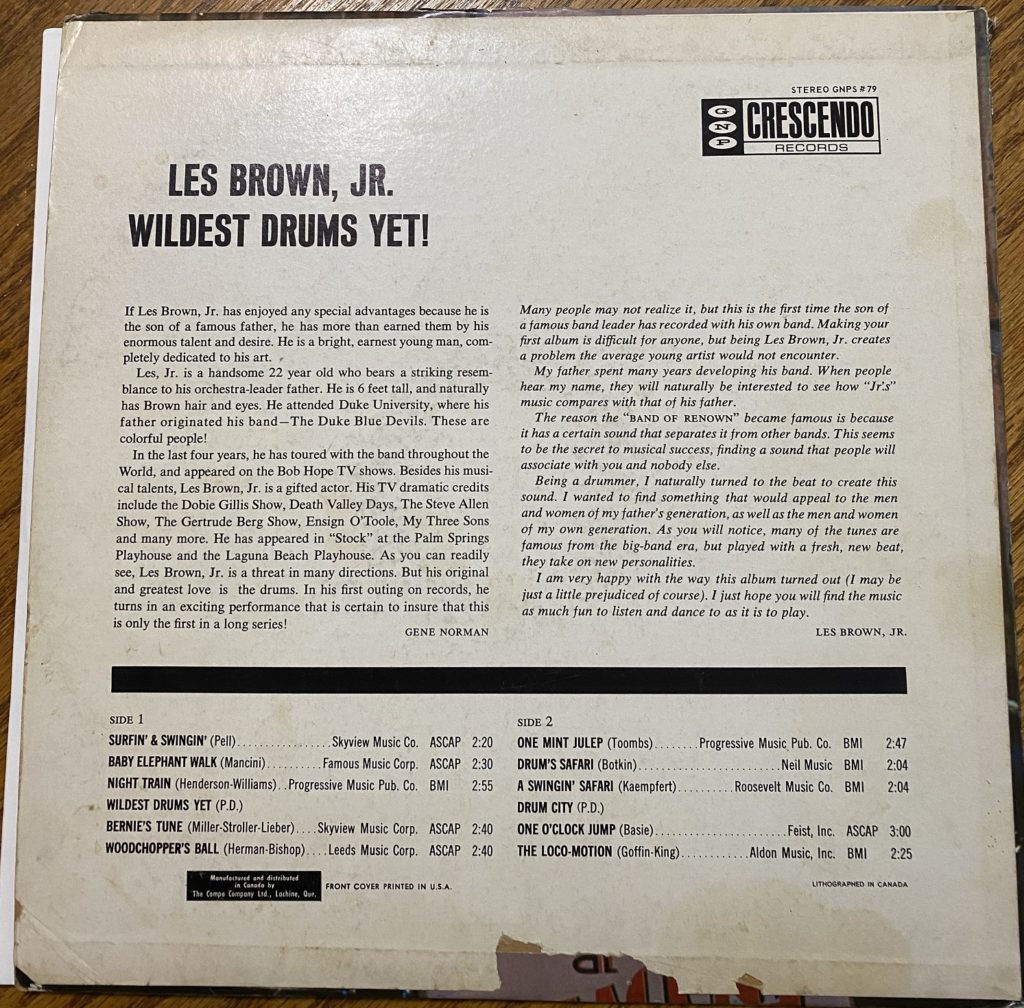
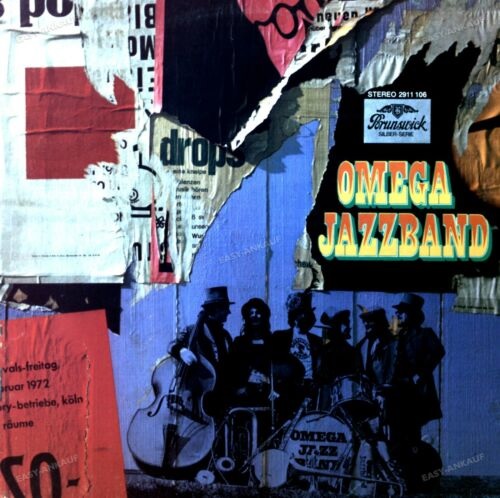
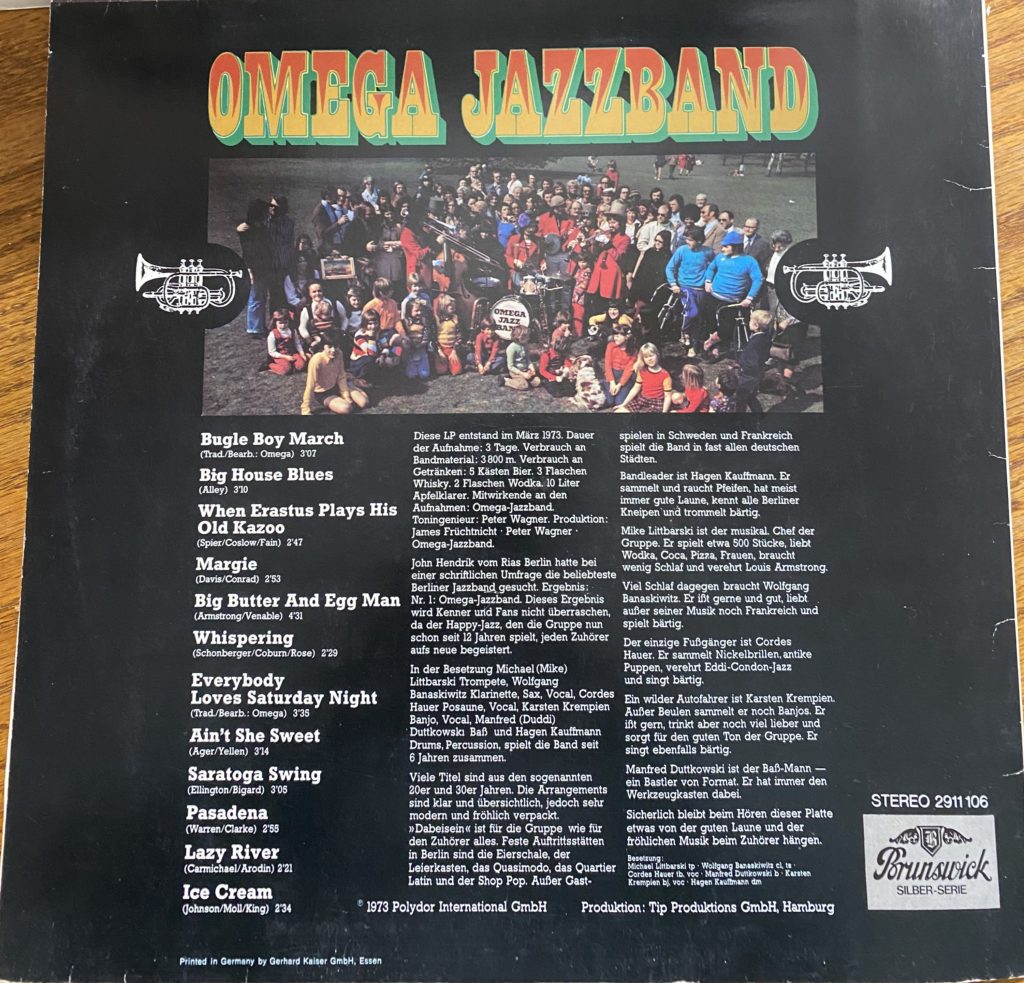
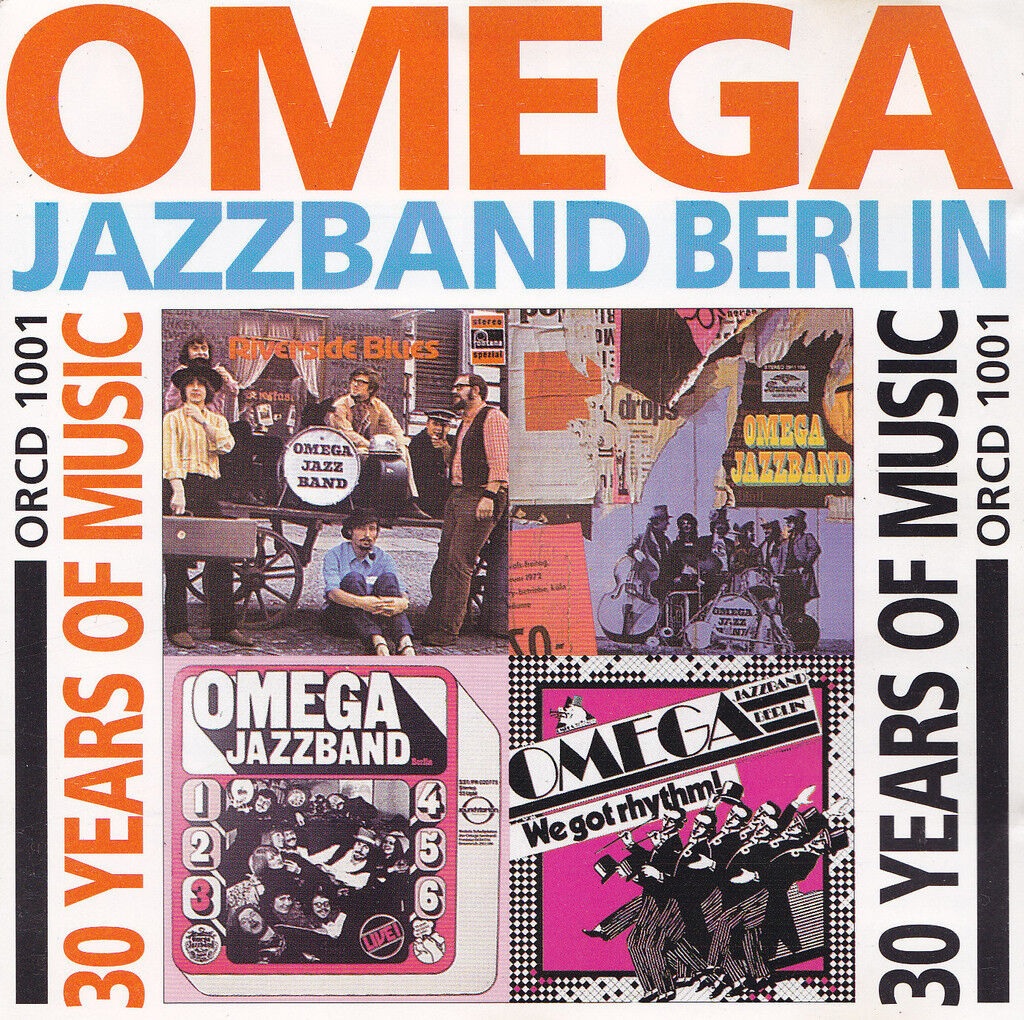
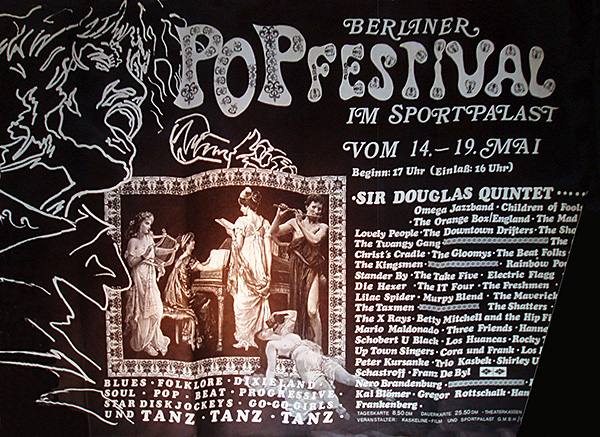

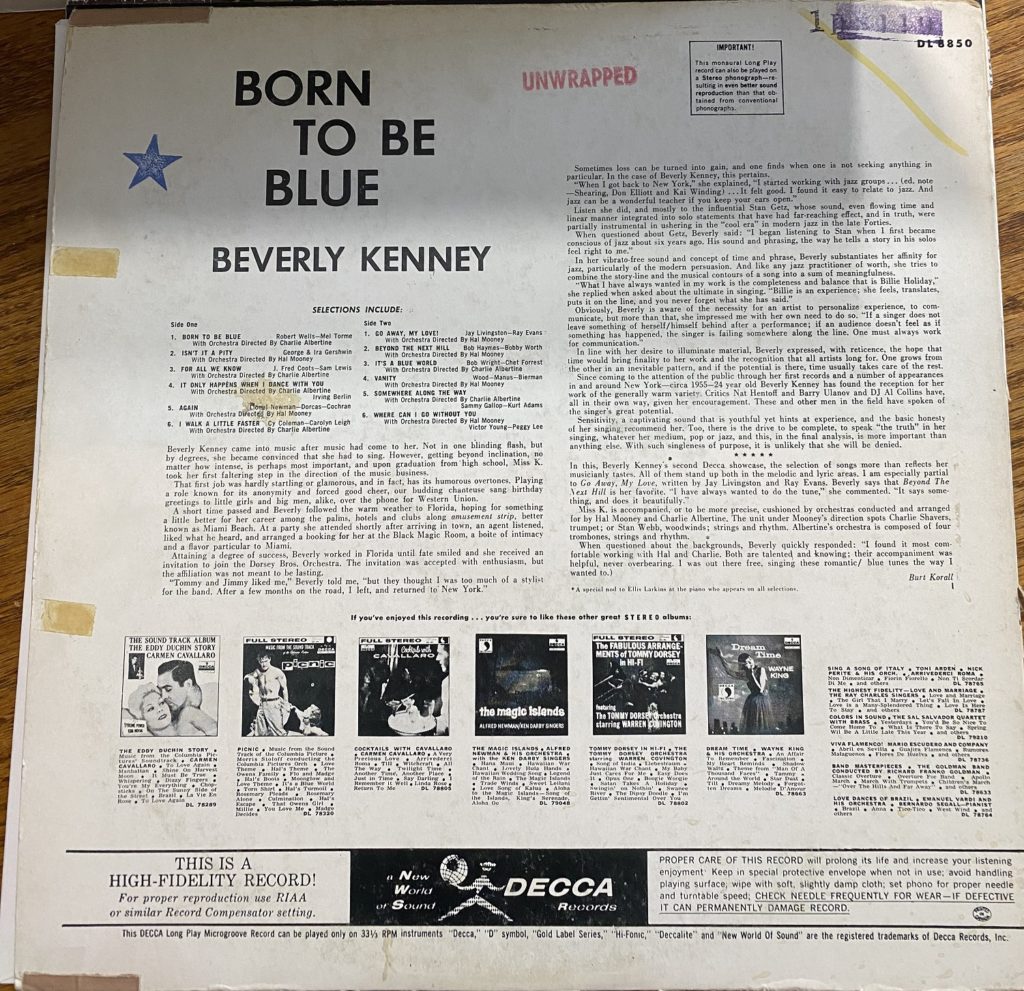



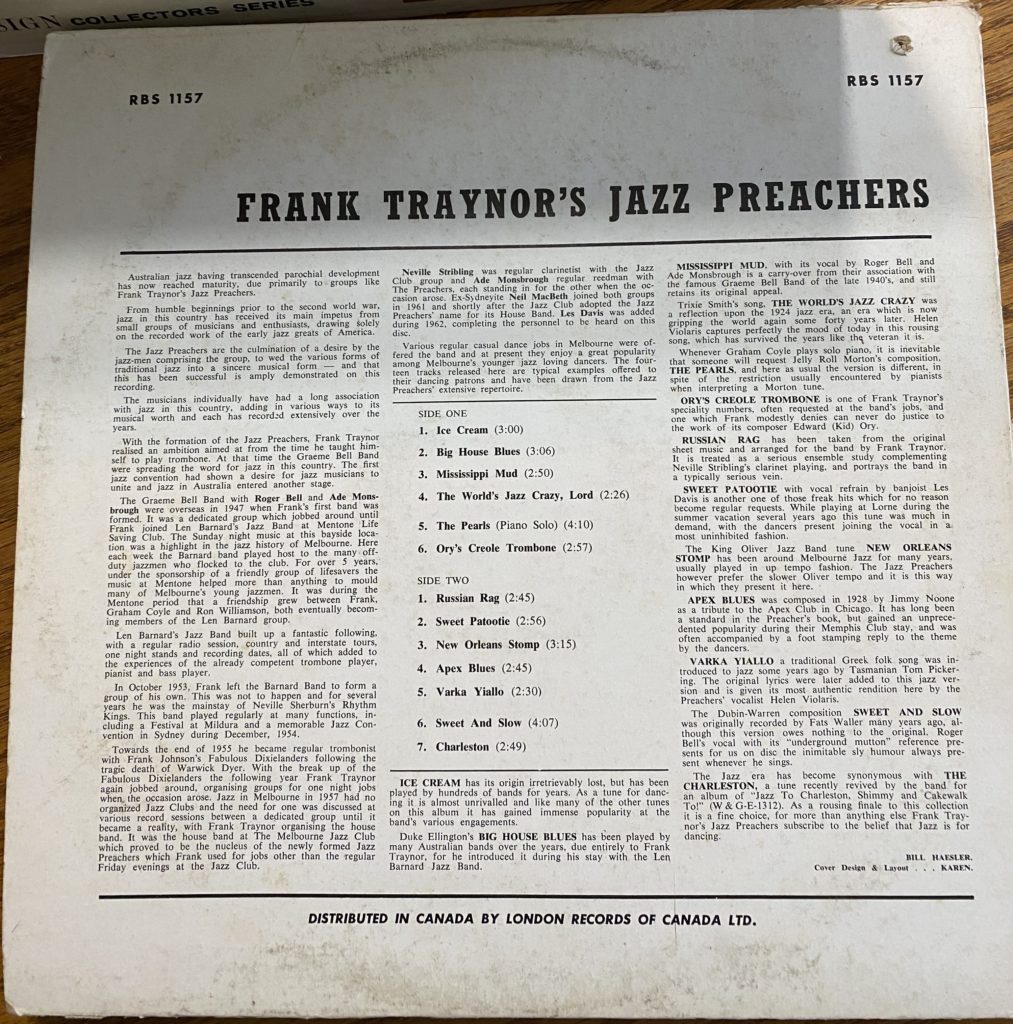
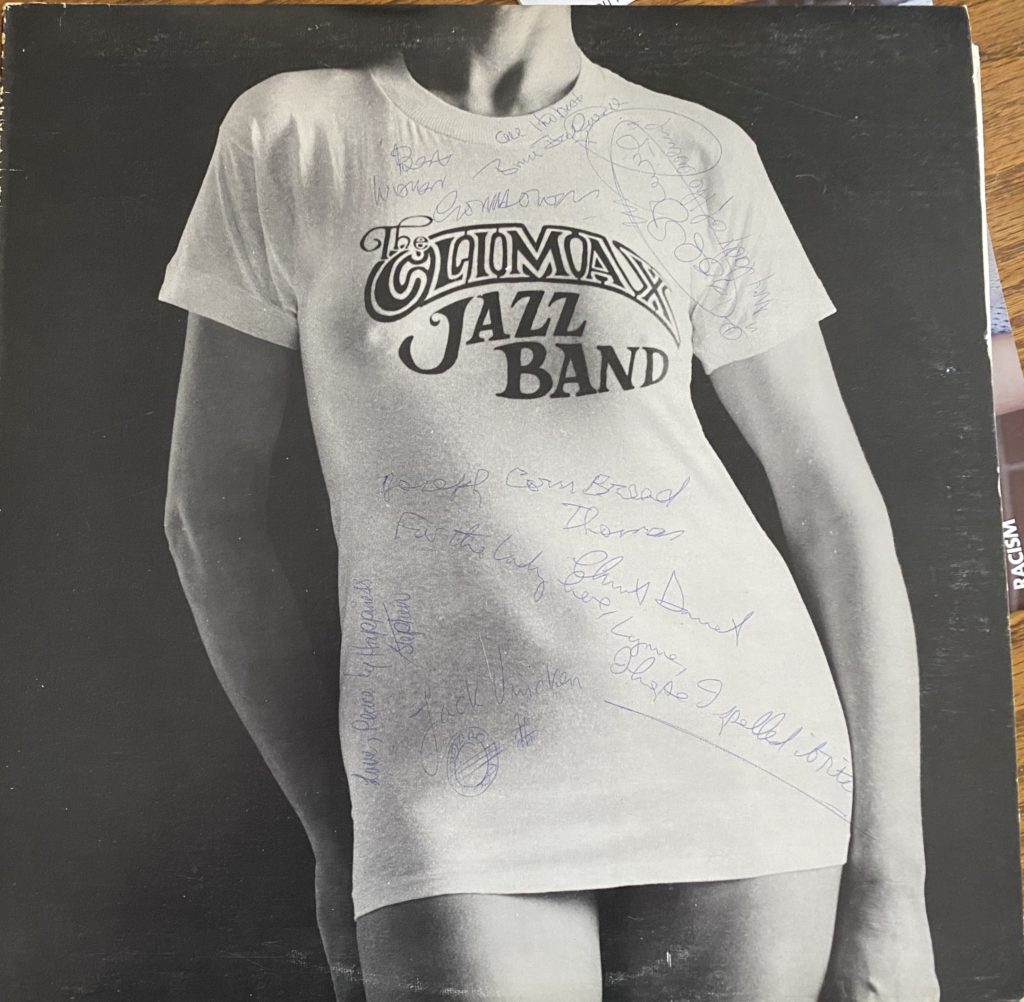
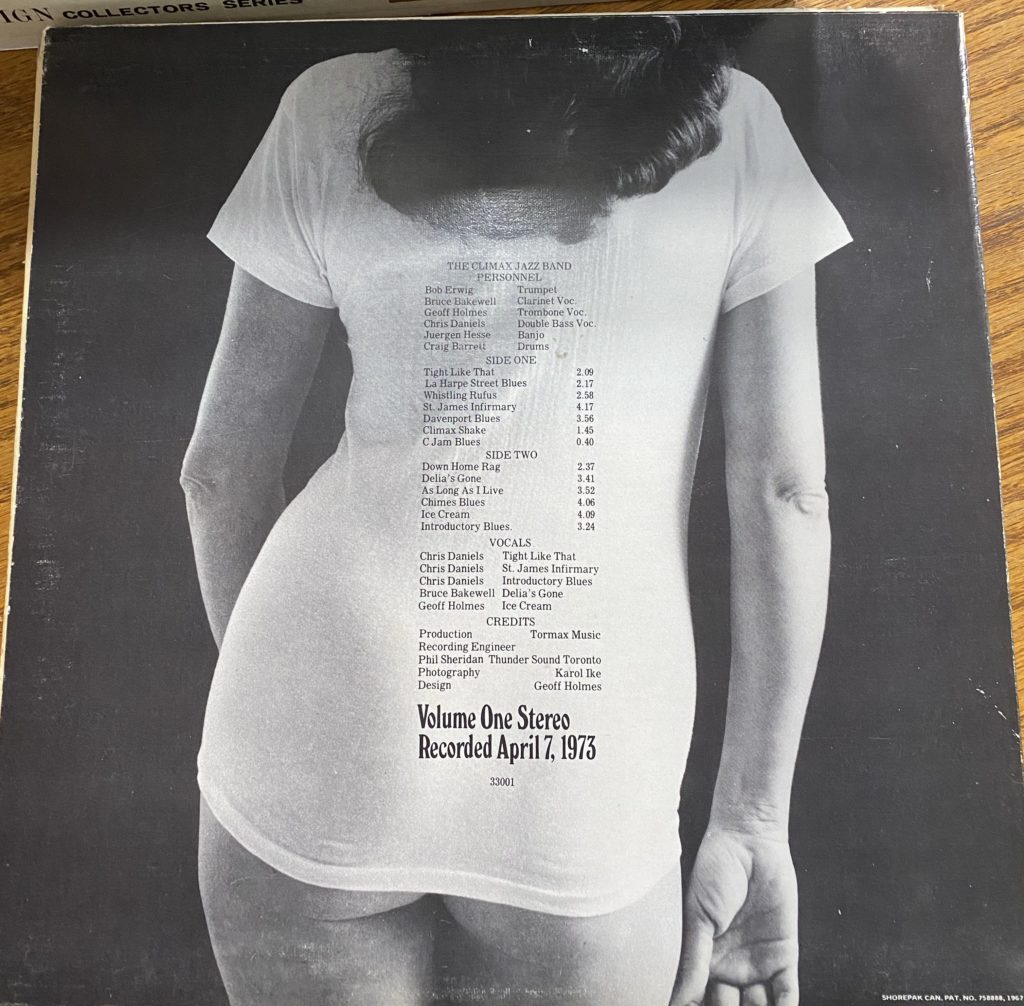
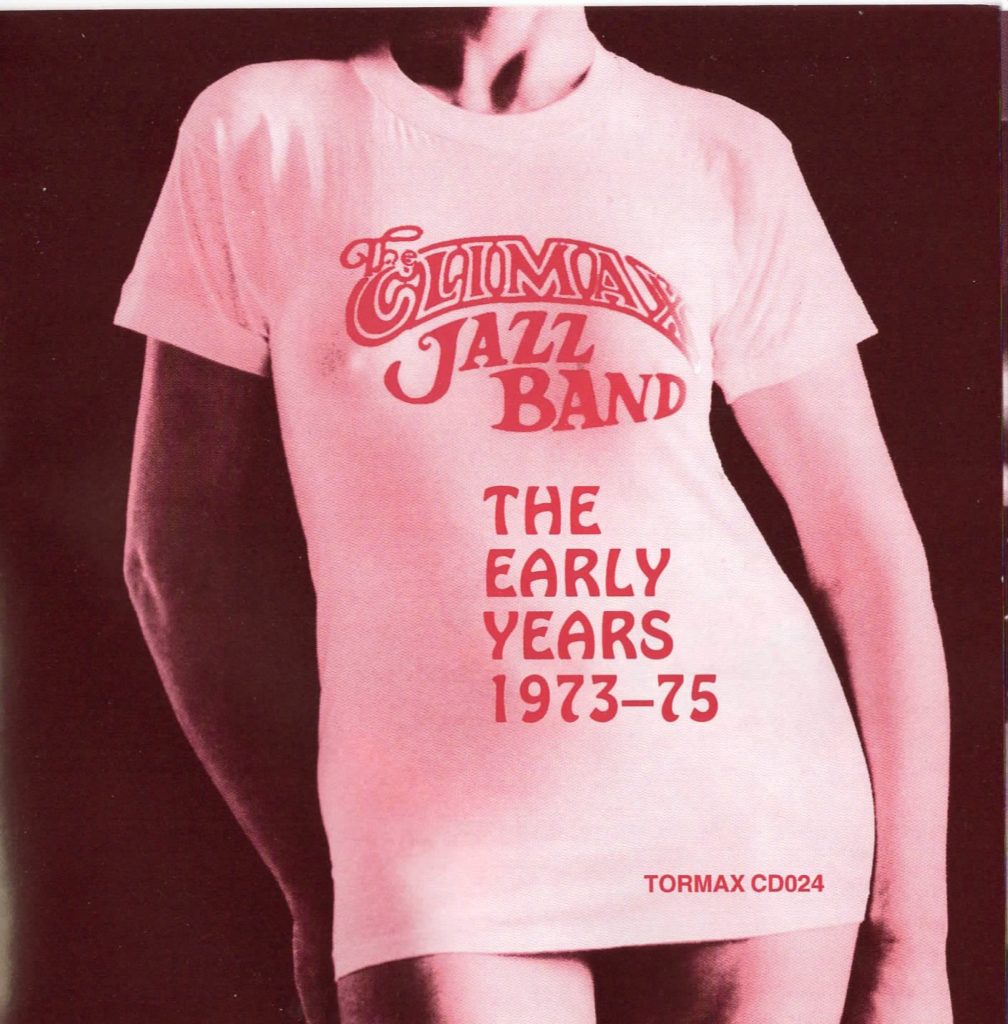
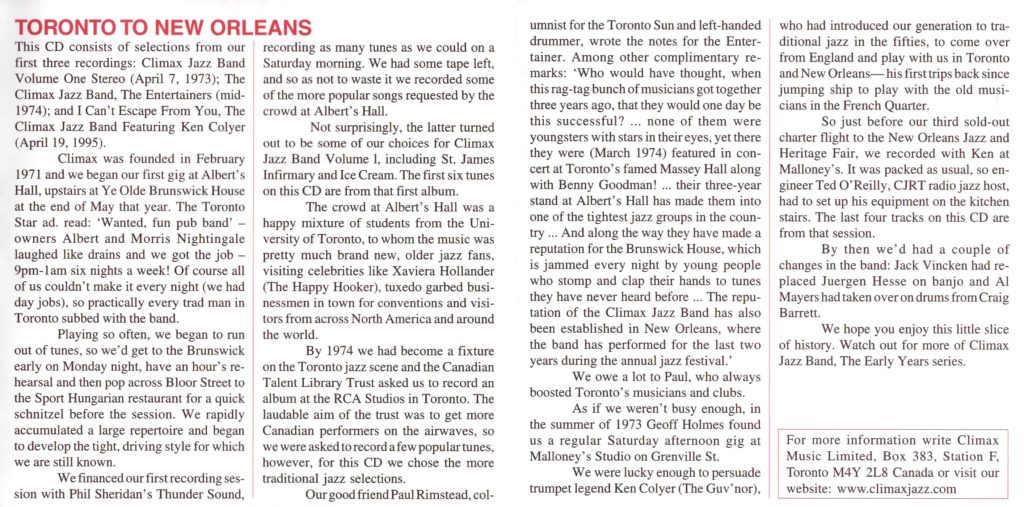

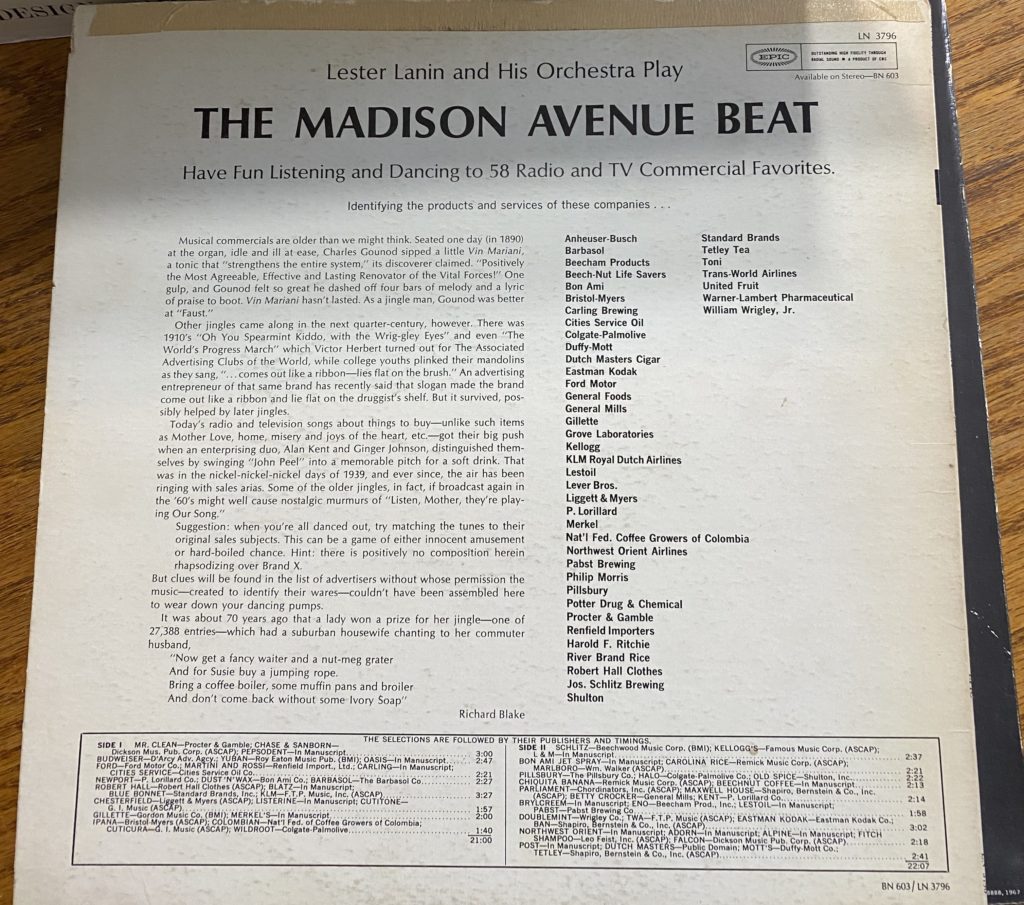

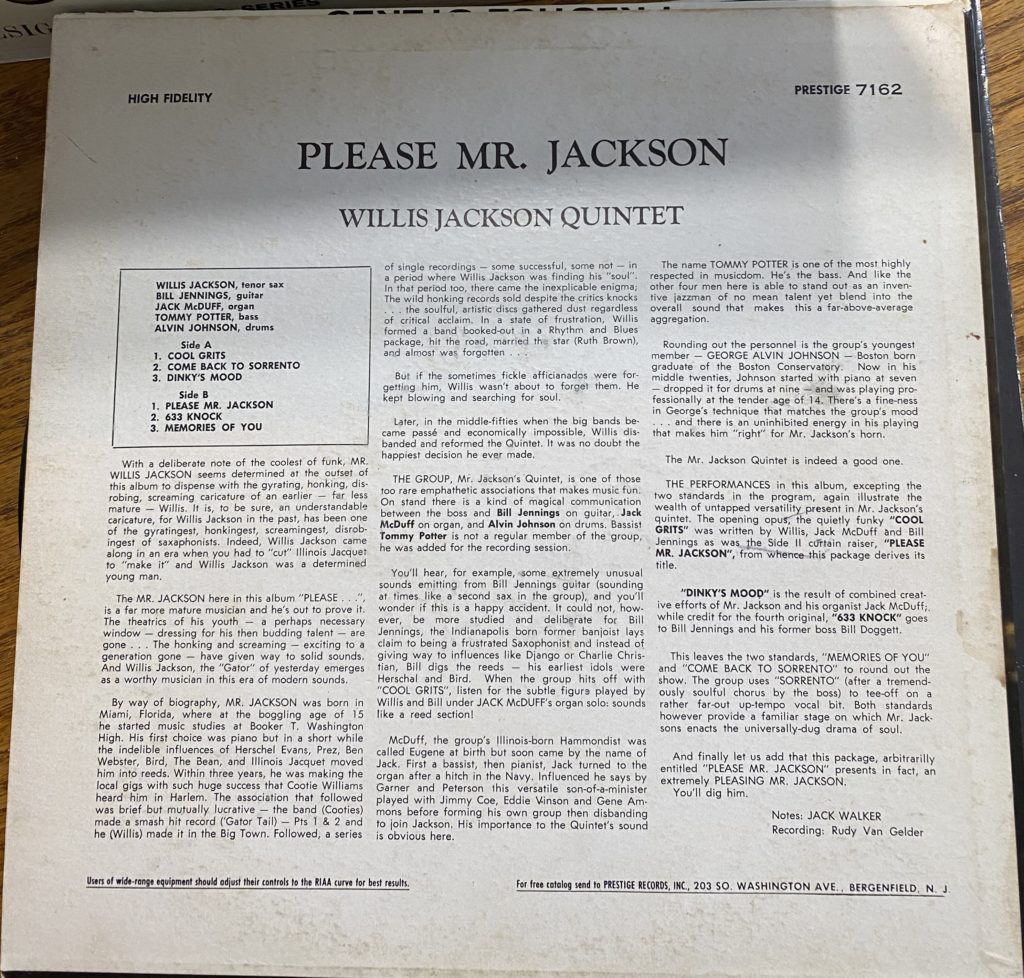

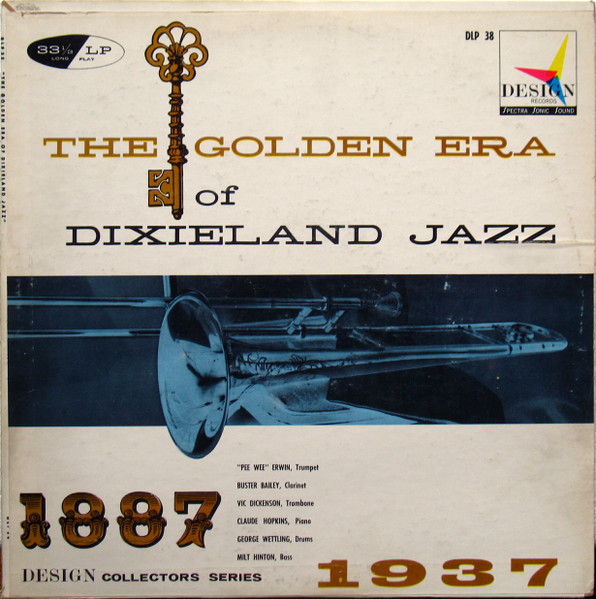
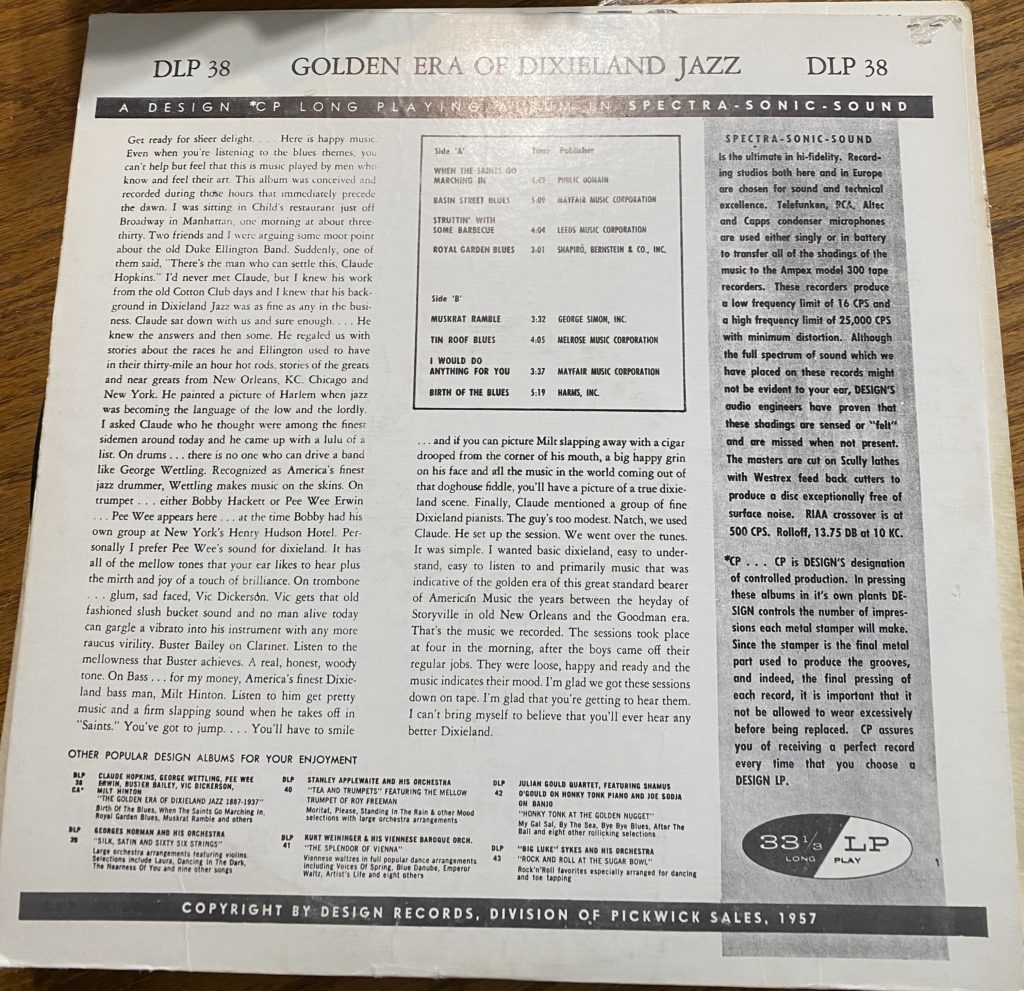
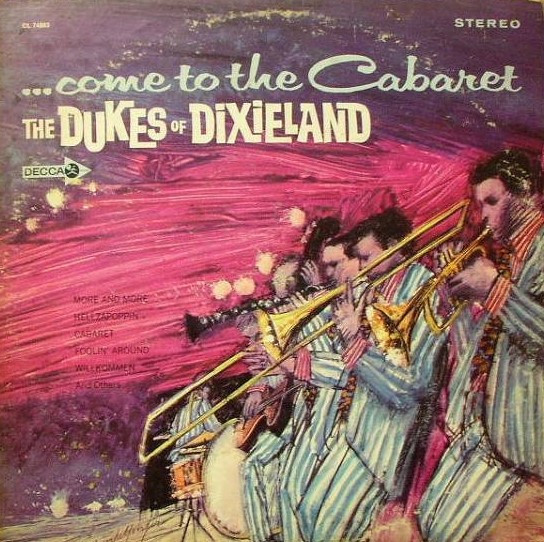
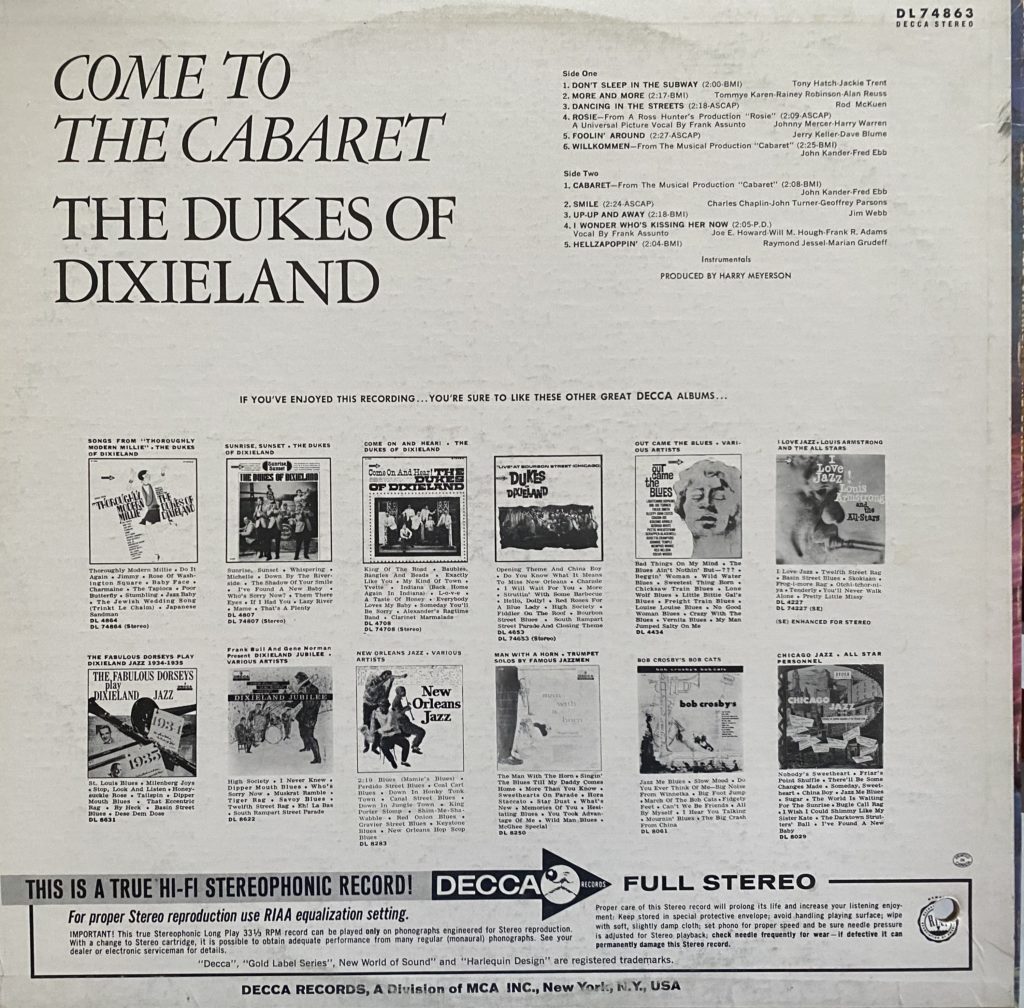

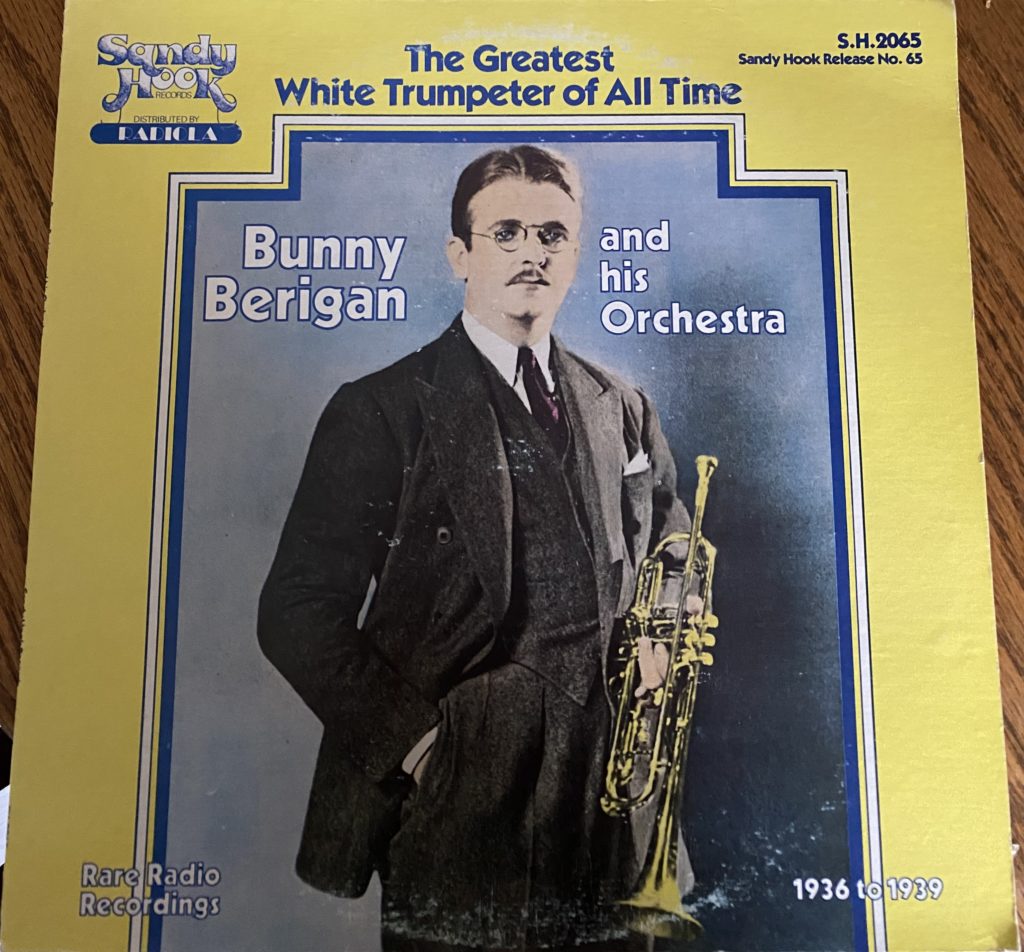
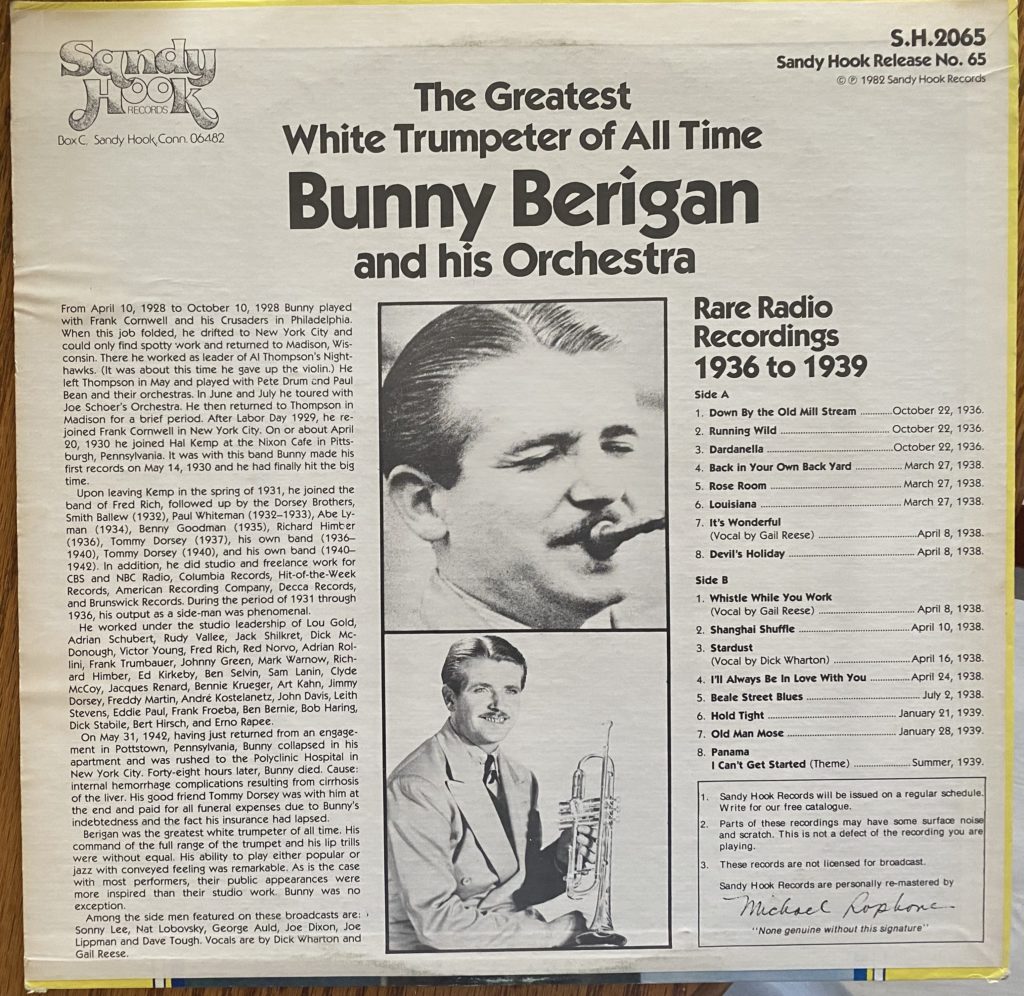


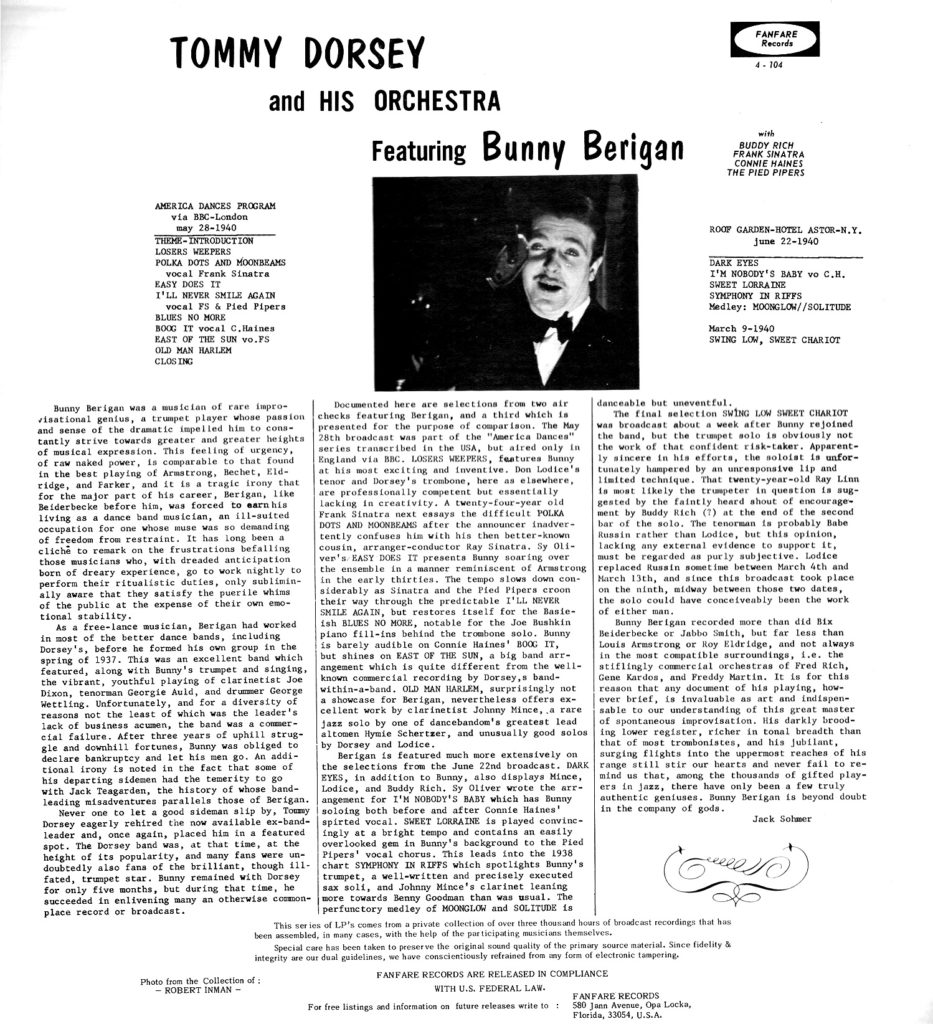

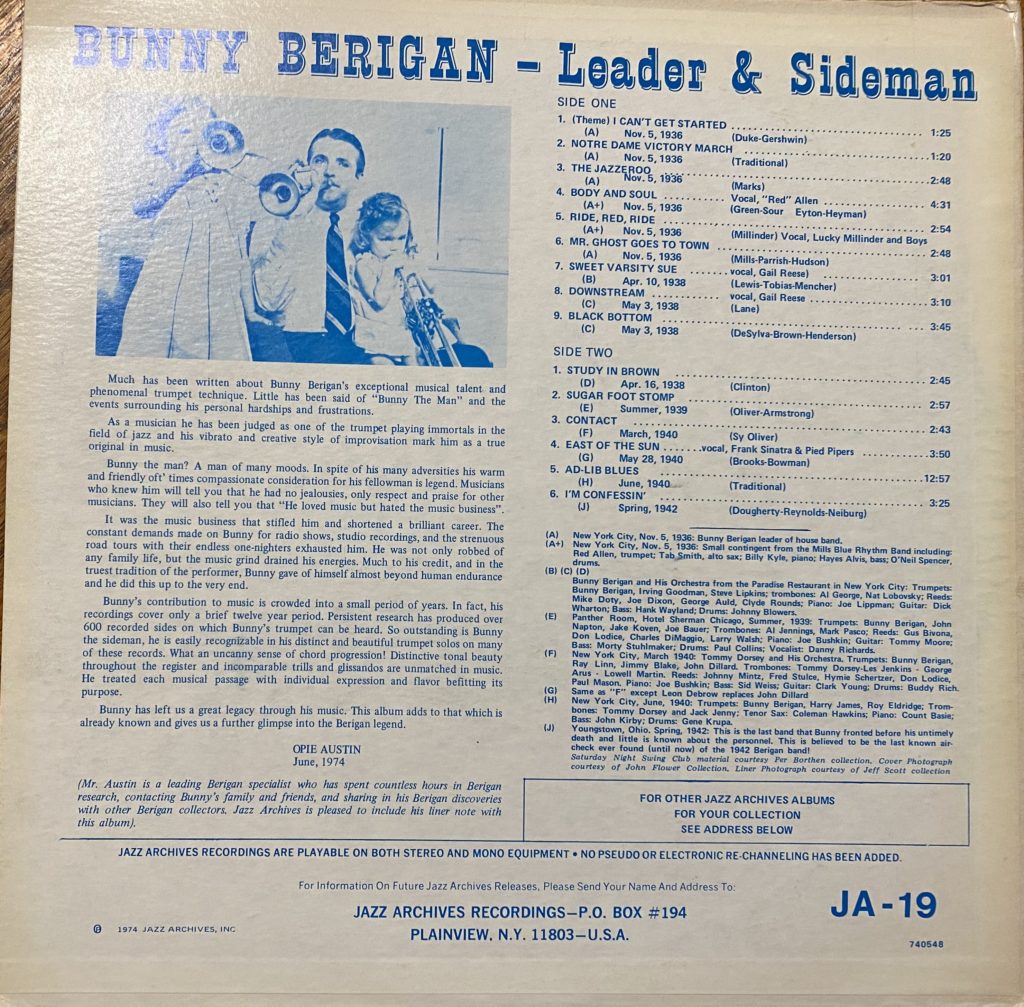
 Does that make sense? Here it is the first full week of July, 2021, in a heat-wave and I need a brain-wave. I’ve done the inspirational recently and looked at the world situation until I’m tired of looking at it. I got my second vaccine last week, Moderna, and had no reaction. So that story is put to bed. By the way, get a vaccine. So what do I want to talk about? Well you know me, it’s all about the music.
Does that make sense? Here it is the first full week of July, 2021, in a heat-wave and I need a brain-wave. I’ve done the inspirational recently and looked at the world situation until I’m tired of looking at it. I got my second vaccine last week, Moderna, and had no reaction. So that story is put to bed. By the way, get a vaccine. So what do I want to talk about? Well you know me, it’s all about the music. :format(jpeg):mode_rgb():quality(40)/discogs-images/R-7051026-1432564836-8921.jpeg.jpg)
:format(jpeg):mode_rgb():quality(40)/discogs-images/R-10193633-1499675435-2473.jpeg.jpg)
:format(jpeg):mode_rgb():quality(40)/discogs-images/R-15255260-1588756689-9800.jpeg.jpg)
:format(webp):mode_rgb():quality(90)/discogs-images/R-10084150-1491322232-5941.jpeg.jpg?cnt=0)
:format(webp):mode_rgb():quality(90)/discogs-images/R-7051026-1432564836-8921.jpeg.jpg)
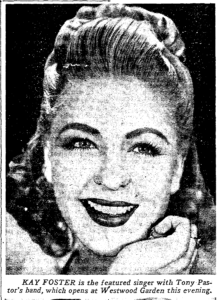

:format(webp):mode_rgb():quality(90)/discogs-images/R-5832763-1403974839-1485.jpeg.jpg)
:format(webp):mode_rgb():quality(90)/discogs-images/R-9954232-1496857708-7155.jpeg.jpg)

